Master builders of biodiversity
The ecological sciences and the wider family of nature conservation (at least in Germany) have only recently begun to argue that grazing is a key positive factor for evolution and biodiversity. The following essay provides an overview of selected aspects of this topic. For example, why has the evidence and logic of processes that correlate with the presence of grazing animals been ignored for so long and why do extensive grazing methods still have difficulties being accepted as a strategy in nature conservation?
von Margret Bunzel-Drüke & Rainer Luick erschienen am 15.03.20241. Overview
Large herbivores have played and continue to play, a central role in the formation of numerous biomes in recent (Quaternary) Earth history, and are necessary and characterizing agents for their functional existence. In Central Europe, for example, herbivores prevented closed forests becoming ubiquitous during warm periods such as the Eemian interglacial and also following the last glacial period around 12,000 years ago. Above all, through their diverse feeding behavior, and their resulting influence on vegetation in general, but also through treading, rolling, sweeping as well as uprooting, snapping and peeling of trees, they created sparse, semi-open and structurally rich forests in places. This also initiated and promoted the development of raw soils and the formation of grasslands and tall herbaceous stands. These are the habitats for light-requiring plant species that would not have had the opportunity to establish and develop in dense forests, many of which we find today as character species in meadows and pastures. However, the co-evolution of small and large herbivores with numerous and diverse plant species and the adaptations of these plant species to the powerful predators has taken place on our planet over millions of years and not just in the few seconds of the post-glacial period. The biomes assigned to the Earth's more recent history are merely a reconfiguration of puzzle pieces and processes that have existed for a long time. Thorns, spines or bitter substances and toxins in particular, but also certain growth forms and phenological effects are part of these evolutionary adaptations of plants and form an important protection against herbivores, at least temporarily. However, it must be emphasized that such plant species are also characteristic for certain meadow communities. But at the same time there is not a single species plant or animal of that has evolved under the influence of a sickle, scythe or other mowing devices or has developed specific adaptations to this factor.
The fascinating shared history of plants and herbivores and the resulting habitats are manifested through many other aspects. For example, the prickly formations of wild roses, brambles and other thorny and prickly shrubs are also refuges for bird species (many of which are rare today), which can breed here safely from their enemies. The dung of wild animals - especially the large grazing animals, the so-called megaherbivores - is a whole separate chapter. Dung is a cardinal ecosystem factor - above all as a source of food, producing nutrients that are constantly redistributed over large areas and even across biomes, thus re-establishing links to the existence and growth of plants. Insects and species from many other taxa have adapted to these energy-rich metabolic products that are available in large quantities. These coprophagous communities - not to mention many specific fungal communities - are in turn starting points for other complex food chains that are easier for us to observe, especially those of birds, bats and amphibians. This paper explains the central importance and ecological functions of the large herbivores in our landscapes in the past, that are theoretically possible (again) today and illustrates their importance as a key factor for the development, existence and conservation of habitat-typical biodiversity as a primary political goal of nature conservation.
Of particular relevance are larger herbivores, the megaherbivores and their landscape-forming capacities, the definitions of which diverge as to the size and weight at which one considers a herbivor a megaherbivore. According to some views, only gigantic grazing animals over 1,000 kg body mass are megaherbivores; others include smaller to medium-sized mammals from around 44 kg body mass. This puts us almost in the weight class of the most effective herbivore landscape designer in floodplains in recent times, i.e. the beaver.
12. The emergence of scientific knowledge
Heinrich Cotta (1763-1844), the founder of modern forest science and forestry, made the following statement: "If people left Germany, it would be completely overgrown with wood after 100 years" (Cotta 1817). Based on the knowledge available in Cotta's time, the underlying facts and their interpretation, this conclusion was logically correct. However, it was above all the climax theory presented by Clements (1936) that has had a formative influence on the basic knowledge of vegetation and forestry that is still taught today. According to this theory, the hypothetical final stage of a succession is solely dependent on the general climate of a region, as long as there are no disturbances caused by humans (e.g. Dierschke 1994, Fischer 2003, Pfadenhauer & Klötzli 2014). According to the climax theory, the natural development of ecosystems in Central Europe on brown earth would lead to a dense beech forest almost everywhere. Another convergent explanatory model, which also projects the final state of vegetation development in a region, is the construct of so-called potential natural vegetation (potentielle natürliche Vegetation, pnV) presented by Tüxen (1956), which is propagated above all by representatives of phytosociology (Pflanzensoziologie), a hierarchical model of vegetation order with the forest as the climax type. The pnV is a fictitious final state, usually a closed forest (with the exception of special locations), whose formation is thought to be due to the climate and other site-specific factors (including those changed by human influences), but without continued human intervention. In Germany in particular, the pnV concept - and in some cases meticulous regionalized derivations of it - have been used in vegetation and forestry science and also as a basis for defining normative nature conservation and silviculture objectives to this day (e.g. Bon et al. 2000, Suck et al. 2014, Kowarik 2016).
Completely different models of post-glacial landscape genesis in Central Europe are based on new pollen and palaeoecological findings and on new interpretations that began to influence the often doctrinaire German conception of the genesis of landscape, vegetation, structure and processes from the 1980s onwards. The work of Martin & Wright (1967) and Martin & Klein (1984) on the anthropogenic mass extinction of large mammals towards the end of the last glacial period at the transition from the Pleistocene to the Holocene and the resulting consequences for the biomes was downright revolutionary and "blasphemous" with regard to the "proven scientific evidence that every development leads to a closed forest". This work was the basis that led to the formulation of the "megaherbivore hypothesis". Of interest was not only the dispute about the causes of the extinction - climate, overhunting ("overkill") - by the early hunter-gatherers or a combination of these factors - but also the effects of the large mammal communities. In other words, the effects on vegetation and its further development after the abrupt disappearance of a large part of the megafauna, which abruptly ended millions of years of existing evolutionary processes in geological terms. This sudden extinction can be proven on all continents, with the exception of Africa. Since sudden climate changes can be ruled out as possible explanatory factors for all regions, basically only anthropogenically induced disappearance (extinction) is a reliable explanatory factor. It was not hunting alone, but presumably also indirect effects and negative feedback from hunting, such as the influence on the population structure and behavior of megaherbivores, which in turn had an influence on vegetation development and the spread of plant species (tree species) (see also Chapter 5).
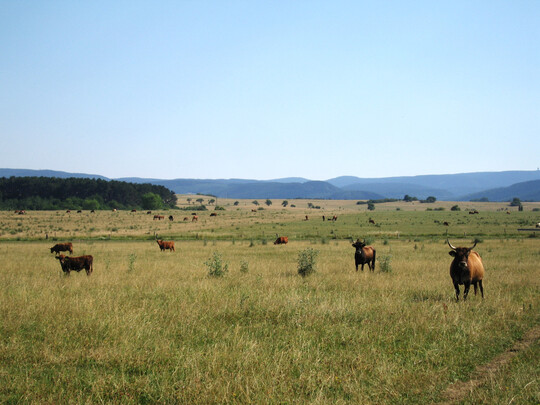
This briefly describes the megaherbivore hypothesis. Pioneering introductions of these findings into our world and transfers to Central European situations include the work of Geiser (1983 and 1992), Bakker (1989), Beutler & Schilling (1991), May (1993), Bunzel-Drüke et al. (1994), Vera (1997 and 2000), WalliesDeVries et al. (1998), Svenning (2002), Sommer et al. (2016) and Sommer (2020). What does not appear as an impact parameter in climate change theory or in the pnV construct is the influence of a number of herbivorous large mammals that continued to occur 5,000 years ago - i.e. after the mass extinction. These megaherbivores (including bison, aurochs, elk, horse and red deer) can also be assigned a determining process and shaping factor in Central Europe - outside the mountain regions. The logical conclusion is that in the primeval landscapes shaped by these large animals, sparse forests were certainly widespread, although they would not necessarily correspond to our modern concept of the term "forest". In lowlands and hilly areas, the beaver must also be included as a “design factor”. These animals and their active forces would still be effective today if they had not also been wiped out or nearly decimated by humans in recent history.
In Central Europe, however, with the advent of agriculture in the Neolithic period, there was initially a phase in which indigenous megaherbivores were still present, and then replaced by domesticated animals such as cattle, pigs, sheep and goats that took over the functions of the increasingly rare natural megafauna species. Due to the high numbers of livestock and their omnipresence in our landscapes, this collective of grazing animals had a landscape-changing character that can still be seen today. Of the naturally occurring ungulates, however, only the roe deer remains. This is because, at least in Germany, red deer have been allocated "areas of occurrence", where they are then usually forced into the forest in far too large populations and are a problem factor due to browsing and peeling damage to trees, at least from the perspective of forestry.
The essay "Deer and Dauerwald in Germany" by Aldo Leopold, the forefather of North American nature conservation and pioneer of ecological thinking, who visited Germany in 1936 and who was extremely surprised at the forestry practiced at the time and especially at the hunting system, which largely ignored ecological principles, remains enlightening today (Leopold 1936).
Exactly what effects the animals had on the vegetation or the development of "forest ecosystems" in the different natural areas will remain speculative. It is even more difficult to project the grazing effects of the large mammals that were driven out and exterminated to the vegetation of today's forests (e.g. Svenning 2002). However, certain deductions can be made in the sense of an actualistic deconstruction of phenomena that still exist today. For example, the projection of a pnV without human influences and probably with an explosively multiplying fauna, would be completely different if the regulatory effects of hunting and other anthropogenic factors were to disappear. Just imagine our floodplains and water landscapes if the beavers were suddenly the unregulated master builders; Weismann ventured such a fiction, the "world without us", but with the animals then spreading rapidly, in his book of the same name (Weismann 2007), which is well worth reading.
2Convincing lines of argument for these post-glacial, almost synchronous parallels between settlement, hunting and land use with forms of animal husbandry and influence on vegetation and landscape patterns are also increasingly coming from cultural research: new anthropological findings are making it increasingly clear that Mesolithic and Neolithic cultures probably triggered much more intensive processes of landscape and vegetation change than previously assumed (e.g. Parzinger 2015, Poschlod 2015). We now know that the composition and design, and thus also the biodiversity, of our landscapes with the presence of megaherbivores is fundamentally different from those without. These ideas are increasingly being taken into account in modern models for guiding principles for landscape development.
3. The influence of ungulates on the appearance of the landscape
The Holocene differed from the preceding interglacials in that it was more heavily forested. Its relatively species-poor, shady high forests are a very recent phenomenon in terms of vegetation history (e.g. Frenzel 1983, May 1993). They were apparently able to develop because the natural counterparts of the trees, namely megaherbivores such as elephants and rhinoceroses, had already been wiped out and other large animals such as bison, aurochs, horses and elk had become rarer. Conclusions about the extent of the forests, the size of open areas in them or the forest density are questionable due to the very limited spatial informational value of pollen analyses. The Dutchman Frans Vera (1997) hypothesizes that even in the Holocene, large areas of the Central European lowlands had no closed forests, but that the populations of surviving herbivores - above all the aurochs and wild horses - were sufficient to maintain pasture landscapes consisting of mosaics of grasslands, thorny bushes and trees, in which the density of ungulates reached the capacity of the habitat. Light-loving tree species such as the oak grew up under the protection of bushes with thorns or spines, which gradually died off with the increasing shading effects of the trees and a grazed grassland developed again. This vegetation cycle ensured that the different biotope structures coexisted.
Large herbivores, especially in herds, promote an uneven distribution of nutrients over time. Long-term vegetation observations in the Swiss National Park have revealed a small-scale transport of nutrients by natural grazing animals (especially red deer and chamois) from preferred grazing areas to resting zones or storage areas. Krüsi et al. (1995) describe the following cycle: "Relatively species-poor, rich meadows and pastures develop into species-rich lean pastures as a result of overuse of high-quality grass and herb species by herbivores; these become less attractive to grazing animals due to poor forage quality, become species-poor, become overgrown with bushes and, in the longer term, turn into forest. Forest areas that are intensively used as resting zones in turn have a positive nutrient balance. Permanent use as resting zones leads to an overaging of the tree stands, to their collapse and to forest clearings, which can develop into attractive grazing areas again due to the good nutrient supply. If the grazing pressure is too low, these gaps in the forest soon close again."
Smaller nutrient-rich (eutrophic) areas with the occurrence of nitrogen-loving "ruderal plants" are to be expected in the natural landscape not only in meadows, but also in swaps, wallows and in the area of the distinctive "latrines" of horses, as well as in places where ungulate carcasses were found. Above all, the specialized grazers horses, cattle and to a lesser extent bison can create and maintain grasslands. So-called "grazed meadows" are created when grazing in a particular place increases the likelihood of ungulates searching for food there again. Grazed grasslands are areas where the plants are kept in a young, fast-growing state by grazing (McNaughton 1984). Such areas often differ significantly from neighboring, ungrazed parts of the landscape, creating a heterogeneous landscape. On less productive soils or those with very heavy grazing, however, the opposite effect can occur: If the grazing of an area already used by ungulates in the past is unprofitable due to slow plant growth or the production of indigestible plant constituents, the ungulates prefer to feed in "new" areas. This uniform grazing makes a landscape homogeneous (Hobbs 1997).
4. Wooded pastures - the dominant form of livestock husbandry from the Neolithic to the 19th century
3Can ungulates turn FOREST into OPEN LAND? This serious question is often formulated as a hypothesis and then used as a counter-argument to the megaherbivore hypothesis. Heinz Ellenberg, probably the most influential vegetation researcher in the German cultural area in recent decades, describes the effect of domestic animals on the forest as follows: "In its most extensive form, forest grazing only damages the young growth of trees. Over time, however, this alone causes the forest to thin out because gaps in the tree layer are no longer closed. However, all open spaces mean better forage prospects for the leaf-eating cattle. This is because light-demanding herbs and grasses can colonize here, many of which have a greater nutritional value than the actual forest companions. ... The remaining trees take on broader crown shapes and often branch down to the ground. All trees that are readily eaten by livestock, however, appear to have been shorn off at a height parallel to the ground surface determined by the animals' reach. The original forest plants have to retreat into the shade of such residual trees and leave all the more exposed areas to the hemicryptophytes (perennial, herbaceous surface plants; mainly herbs and grasses) and chamaephytes (dwarf shrubs) of the pastures and heaths. Gradually, the plant communities of the open land spread more and more until they become the sole dominant species in large areas" (Ellenberg 1996).
Ellenberg thus aptly describes a form of utilization that extended from the Neolithic to the agricultural revolution towards the end of the 18th century, and, in some cases, until the middle of the 19th century, as Central European livestock farming was largely pasture-based for many millennia. The transition to distinctly stable-based husbandry and the necessary feed conservation for the winter months through the creation of meadows, only developed in the context of agricultural reforms towards the end of the 18th century and then especially until the middle of the 19th century (e.g. Flad 1987, Küster 1995, Luick et al. 2019). However, a better term than wood pasture is a pastoral forest or silvopasture, as these were rather semi-open systems and hardly any pasture in closed forests. In German forest areas that have their roots in traditional wooded pastures still have numerous region-specific names that indicate this. Terms such as: Almen, Alpen, Hardte, Heiden, Holzwiesen, Hutungen, Hutewälder, Krattwälder, Weidewälder, Weidfelder, Maisalmen, Ötzen, Schachen, Tratten, Grinden and Triften contain characteristics such as openness, mowing pasture use or the loose tree population of an area. A term still commonly used in the 19th century for such semi-open landscapes was "heath". However, this was not so much the term commonly used today in vegetation science for tree-free vegetation dominated by heather, but rather a legal term (Diemont et al. 2013). Heathland were those parts of a community surface that were not included in arable farming systems, but were open for the free grazing of the livestock of the citizens of a village community. As mentioned above, this also included a large proportion of the forests, which were continuously degraded due to ongoing overuse (Burrichter et al. 1980, Pott & Burrichter 1983, Pott & Hüppe 1991, Kersting 1991, Hüppe 1997, Vera 1997 und 2000, Lederbogen et al. 2004, Luick 2008, Reichhoff 2010).
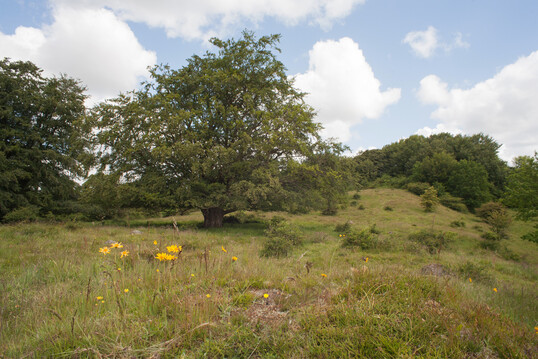
For thousands of years, fattening pigs in the forest was of great economic importance. Written evidence exists for Central Europe from Roman times, and refers to the different taxation of various forest pastures. The value of beech and oak forests for pig fattening was generally higher than their forestry value (Dannenberg 1990, Regnath 2008). It is therefore quite conceivable that the spread of oak forests was directly planned, and was supported by planting or promoted by selective use; examples are widespread known as from the Solling (Gerken et al. 2008). Since pigs were only introduced under the oaks in fattening years, it is quite possible that the burrowing activities and the elimination of competition from the bristle-bearing animals also improved the germination and establishment conditions for oaks. Perhaps it was also the synergies from both processes (control by humans and the selection effect of the pigs) that were conducive to oak forest development. Some of today's oak forests, which are among the most species-rich forest types in Central Europe, can be traced back to the historical use and promotion of pig fattening: Today, they are used purely for forestry and are a silvicultural challenge in terms of establishing and promoting oak.
Situations in which significant forest regeneration could still occur despite grazing were therefore probably the exception in terms of area. The work of Florian (1968) and Eick (2014) on the history of the “Schwetzinger Hardt” in the northern Baden Rhine plain vividly documents the transformation of a mixed beech forest that presumably prevailed in the 4th millennium BC. From the Bronze Age until the 19th century, cattle were herded here, and an increasingly sparse oak forest developed. By the middle of the 18th century, this was over-aged and largely devastated by intensive forest grazing, game fences and unregulated wood and litter use. After the ban on grazing, the clear-cut areas were then quickly converted into a pure pine forest by sowing pine trees, as is still the case today in many such locations (glacial soils with a high proportion of sand).
In summary, it can be said that until around 250 years ago, the majority of our present-day forests in almost all natural areas were subject to a greater or lesser degree of influence from livestock. As outlined certain "silvicultural" ideas were even shaped by livestock farming. This grazing influence probably took place almost year round in the middle and lower altitudes; the only exceptions were probably extreme locations (too wet, too dry, too steep). In addition to the demands of livestock farming and the extraction of firewood and timber, there were countless other forestry activities that no longer exist today and whose utilization demands had to be satisfied in parallel. These included charcoal production, resin and pitch boiling and glass production, as well as the regionally significant demand for mine timber. Since this time, our forests have not experienced any livestock as shaping and process-triggering elements.
45. Large herbivores as habitat shapers - how does this work in detail?
Our ideas about the influence of large animals on landscapes and what we call wilderness are strongly influenced by nature films from Africa and North America: Bison, which like the European bison were once almost extinct, are once again grazing extensively in protected grasslands in North America, and herds of wapiti also maintain the open land in Yellowstone National Park. And, of course, landscapes with elephants and other megaherbivores in Africa are not forest landscapes - but would there be anything comparable under natural conditions in Central Europe? As shown, we have learned this differently: In the dark high forest, which is supposed to exist everywhere as a stable final stage, the climax, no pronounced herb and shrub layer can develop, and thus no herbivore communities with strong heads could have developed; a significant influence on the forest would then be inconceivable. However, initial doubts about this hypothesis arise when foresters describe the destruction of forests by hoofed game (sweeping by red deer and often complete destruction of young growth by roe deer and red deer if the copses are not artificially protected), or when one reads that forest grazing, which was common until the 19th century and widely practiced with all livestock species, was banned because it turned forest into open land in the long term. So large herbivores can have a considerable influence after all!
5Our image of a "healthy" and "normal" tree - and its plural, the forest - is characterized by straight, slow-growing trunks and, in the case of deciduous trees, a symmetrically branching crown at the top. Although a gnarled and crooked tree would perhaps attract more attention in an attraction competition. So which tree shape is more natural? Let's try a scientific approach: in Central Europe, we know almost only plants that grow without the typical influence of large herbivores - apart from grasses and herbs on pastures. And when these are grazed, they form a low-growing lawn with little flower flora and plant species which reproduce almost exclusively vegetatively – just a pasture.
Scientific findings paint a completely different picture of the evolutionary interactions between plants and their "predators". In the course of long co-evolutionary processes, many plants have developed responses to browsing by animals, because they have lived with browsing for so long and in some cases also benefit from it. Some of these plants were then given the attribute "pasture weeds" by us; here are a few examples (e.g. Tscharnke 1991): Some tall perennial species, such as the ragwort (Senecio jacobaea), which is unpopular with livestock farmers, form a new flower after loss of a flower through feeding, a new, shorter stem with several fresh flowers is formed which are then less likely to be eaten by herbivores and even more seeds (diaspores) can be produced. Woody plants such as blackthorn (Prunus spinosa) can grow several new shoots close together to replace a main shoot that has been eaten away, forming structures that are almost impenetrable to herbivores - spherical "cow bushes" instead of airy shrubs. Many tree species have also mastered this art, including lime trees (Tilia spec.) with the formation of so-called "footbags", which protect the base of the trunk with many small shoots of root suckers. And when oaks grow in grazed open land, they do not show the slender, tall trunk shape desired in forestry, which incidentally is usually created by multiple branching and exposure, but shorter and deeply branched trunks, as can be seen in many pictures by 19th century landscape painters (e.g. Makowski & Buderath 1983).
Some plant species are better adapted to browsing than others, either by tolerating browsing like grasses or by developing physical and chemical defenses. The large herbivores keep the competition for light, nutrients and water away from these specialists. Under these conditions, small-growing species stand a chance against large, fast-growing species, that are better adapted to the race for light, but not necessarily to browsing. The summary assessment of the evolutionary effects in the relationship between plants and herbivores thus shows that herbivory was part of normal everyday life in the evolutionary history of these plants, and led to win-win effects for both sides: Herbivory can thus rightly be considered a key factor for biodiversity and ecological functionalities. However, the findings also indicate that the plant species composition with large herbivores is different from that in the meadow plant communities that only developed in recent agricultural history - and are predominant today - where there is (almost) no ungulate influence.
Finally, the following should be noted about beech (Fagus sylvatica). Although this species, which is quite sensitive to browsing and fire, has been recorded locally in earlier inter-glacials in Central Europe, it remained an insignificant component of the vegetation - despite site conditions that were at times similar to those in the present (e.g. May 1993, Lang 1994, Ellenberg 1996). It was a long time ago, but Ellenberg (1996) considers it possible that beech was prevented from dominating in the earlier interglacial periods by the interaction of elephants and other large mammals with wildfires. Through the eradication of large animal species at the end of the last cold period, and probably also through seed dispersal, humans then favored the spread of beech - at the expense of the mixed deciduous "forest" of oak, elm, lime, ash, maple and alder that had previously existed over a period of 3000 years. Schulze et al. (2010) argue in a similar vein, stating that the comparatively rapid change in Central European forests in the period 3000 to 1500 BC towards large-scale beech dominance can only be explained by anthropogenic factors, as no significant climatic changes occurred during this period.
Large herbivores produce vast amounts of excrement. According to estimates by Chávez-Fuentes et al. (2017), livestock alone (cattle, buffalo, sheep and goats) produce 3 billion tons of manure globally every year (calculated as dry mass of solid excrement), and assuming that a third of cattle are predominantly grazings. With a solids content of 20 to 25 %, this amounts to 12 to 15 billion tons of fresh manure. This value appears plausible based on another estimate: of the approximately 4.8 billion hectares of agricultural land worldwide, around 3.2 billion hectares are grazings, which is around 70 % of all agricultural land (STATISTA 2024). Assuming that the economic and ecological carrying capacity is on average 0.2 livestock units per hectare, and that 1 livestock unit produces approx. 10 tons of fresh manure per year, the estimated value is 6 to 7 billion tons of fresh excrement. The unit RGVE = roughage-consuming livestock unit - stands for an equivalent of 500 kg live animal mass. It is important to note, that the additional proportion of wild herbivores on almost all continents is at most around 10 % of all grazing animals (e.g. Ripple et al. 2015).
From an ecological perspective, these are incredibly large amounts of resources that have to be constantly processed. Evolutionarily, complex biocoenoses have specialized in the use of manure and we tacitly assume that these ecosystem services always work. Ultimately, nutrients are provided for autotrophic organisms (especially plants), but significant amounts of greenhouse gases are also produced. However, the fact that large quantities of carbon are also transferred to the soil reservoir when herbivorous manure is utilized under natural conditions, is widely ignored. This is achieved primarily by a complex world of organisms, the coprophages. They are able to actively transfer manure into the soil body. There the dung serves as a food resource and is an incubator for egg and larval development. The numerous species of dung beetles and pill bugs in particular are able to transport dung over several meters and thus enable the distribution of nutrients. Beetles therefore help to a considerable extent to ensure that the soil under pastureland is an important carbon store, and if grazed, that the soil can also be a carbon sink.
A famous study on the importance of dung as a prerequisite for the development of organismic chains is Laurence's work from 1954. Over a complete year, the colonization of cow dung with coprophagous insects and ultimately the decomposition of the dung was investigated on pastureland. The main results were: (1) Different species and abundances occur in different seasons; a total of around 20,000 individuals from numerous taxa were counted. (2) The annual amount of manure produced by a cow is approximately 2 tons of dry matter or approximately 10 tons of fresh matter. This results in 100 to 150 kg of insect biomass when grazing and 10 to 15 kg of vertebrate biomass. In other words, if the manure resource does not exist, then neither do the biotic communities that depend on it.
Ripple et al. (2015) have investigated the ecosystem role of the 74 largest terrestrial herbivore species with a body mass of more than 100 kg and explicitly refer to the spread of diaspores by megaherbivores and the resulting negative effects in the absence of large herbivores. However, the resulting gradual biotic impoverishment is still completely under-researched. In Central Europe, the number and ecological importance of "wild" herbivores is negligible, especially as they, like red deer, only occur in a few and separated areas which are mostly forests. Our herbivorous livestock therefore play an important role in providing manure as an important ecological resource, as a substitute, so to speak. In other words, cattle, buffalo, donkeys, sheep and goats could take on this role if they are kept in extensive pastures. However, cattle, by far the most important herbivore among farm animals, hardly have any access to pasture anymore. In addition, cattle in particular, even if they are still allowed to graze, are usually treated intensively with antiparasitics, which then render the manure basically worthless as an ecological resource (Reisinger et al. 2019, Schoof & Luick 2019).
6. The appearance of the Anthropocene natural landscape under the influence of large herbivores - an attempt at a model
What would the Central European natural landscape of our time look like under the influence of large herbivores, but without humans? This hypothetical question is probably only of interest to scientists as it has little practical relevance: Nevertheless, we will try to construct an answer: We postulate that the more or less rapid spread of remaining herbivores (red deer, roe deer, beavers and we now also include wild boar as well as feral cattle and horses in this group) would already be sufficient to initiate a rapid and rich structuring and de-homogenization of our landscapes (closed forest versus open land). In addition, predators (especially wolves) and their interactions must of course also be taken into account. Depending on climate, relief, geology, soil, humidity and the prehistory of areas, a very heterogeneous and dynamic mosaic would emerge, both spatially and temporally, with diverse transitions from closed forest to savannah and steppe-like areas. However, the rough spatial distribution of forest and open land could well be similar to our current cultural landscapes: Open land in today's Loess soil landscapes, a relatively large amount of forest in the mountains and low mountain ranges and semi-open pasture landscapes on the average to nutrient-rich sites in the plains and lowlands. The rapid pace of climate change and the dramatic consequences for many ecosystems (especially forests and wetlands) may even accelerate such a hypothetical process. In the following, we attempt to describe this assumed diversity in larger units:
- Sites previously classified as "naturally treeless" such as raised bogs, rocky meadows, salt marshes or areas above the tree line would not look significantly different under the influence of herbivores than without them.
- In addition to riparian forests, raw soil areas and reedbeds, riverine meadows probably also exist in the floodplains due to the activity of beavers and other species that come to drink.
- Semi-open habitats that resemble today's silvo-pasture landscapes would be expected in flat or hilly areas.
- Large areas of open land cannot be ruled out either, especially on dry or shallow, mostly nutrient-rich soils; the forest communities typical of these locations have only low resistance to grazing (Ellenberg 1954).
- High forest could develop in places that are unattractive or dangerous for many ungulate species, e.g. on steeper slopes in high and low mountain ranges, on moist to wet, deep soils and probably also on nutrient-poor sites (Krüsi et al. 1995). Herbivorous species apparently avoid poor soils because the plants there have a lower nutritional value and are also often protected by chemical substances (e.g. Howe & Westley 1993, Wallis de Vries 1996).
Our structural construction naturally also includes those master builders who create a vibrant and less static diversity of the forest-open land mosaic of an imagined European natural landscape of the future:
- Seasonal or irregular animal migrations (red deer move back and forth between high and low altitudes and herds of horses roam the plains);
- Mast years, which are unpredictable for seed or seedling-eating animals;
- Temporary decimation of ungulate populations due to epidemics, harsh, snowy winters (rare due to climate change), and probably more droughts;
- Damage to woody plants due to diseases, insect related calamities, increasing regional drought, rarity snow or ice breakage or ice shearing in the floodplains, and increasing windthrows; however, the death of woody plants does not necessarily lead to the emergence of open land as fallen trees can form "natural wildlife fences" in whose protection young growth can grow;
- Prolonged presence of predators in certain places, resulting in a reduction in the degree of herbivory in the surrounding area;
- Wet summers or other positive influences for woody plants;
- Overgrazing of grasslands, which can trigger scrub encroachment and eventual reforestation, because fires are less frequent in short-grassed areas and the absence of fires favors scrub (Hobbs 1997);
- Fire, where fires have very different effects on forest or pasture: In pastoral landscapes, fire frequency is relatively high, but fire intensity is low, as herbivore activity means that only a small proportion of annual plant production is stored as combustible material; in contrast, low fire frequency with high fire intensity is typical for forests, which means that the infrequent fires can have catastrophic consequences. Burnt heaths are likely to be typical elements of the natural landscape in temperate Europe, especially on dry sandy sites.
Conclusions and recommendations
What are our conclusions and recommendations for sustainable and successful strategies for modern nature conservation? Large herbivores are of central importance in nature. Both evidence-based reconstructions of the genesis of our landscapes and ecosystems and a variety of observable phenomena and processes prove this. Our constructed model for natural landscapes provides habitat for most animals and plants of the forest, but also of the open land. In many places it would be impossible to define the area as forest or meadow. Can this image be correct and desirable? Since we humans use the familiar, the painstakingly learned, as a yardstick or basis for our assessment of nature, this new (or forgotten) image of nature seems strange or even wrong to us. Anyone who has learned that Germany is dominated by beech forests under natural conditions, will find it difficult to accept the idea of a forest-and-pasture landscape full of herbivores of all sizes, with many browsed bushes and trees and only small areas of high forest. And yet this image more likely corresponds to the natural landscape.
7Of course, our derivations and models can only be reconciled to a very limited extent with the prevailing structures and the management strategies developed for them in modern agriculture and forestry. However, we also see that the designation of large-scale wilderness areas with process protection is urgently needed in parallel and with normative underpinning, both in open land and in forest areas, whose further development is predominantly left to natural processes. The most important of these processes include the effects of large herbivores - in addition to plant succession and the effects of water, weather and insect predation. In the Netherlands, process protection involving ungulates is referred to as "nature development" (e.g. Baerselman & Vera 1995), while in English-speaking countries the term "rewilding" emerged a few years ago (e.g. Jepson & Bythe 2020). In order for important natural processes to take place again, it is often necessary to restore a good starting point through nature conservation measures. Examples of this are the "unleashing" of a river that has been channelized and stabilized, the rewetting of a drained raised bog or the reintroduction of large animals that have disappeared. The latter is a matter of course in African national parks, while no national park in Germany has yet reintroduced wisent (European bison), for example. Instead, existing ungulate populations are usually "regulated" according to forestry principles. After the Bavarian Forest National Park took the outstanding step in the 1990s of allowing bark beetle calamities to proceed largely undisturbed as a natural process despite fierce hostility (e.g. Rigos 1997, Bibelriether 2017), it should now be time to allow the process of herbivory by ungulates in national parks, and even promote it by completing the natural species spectrum.
In the Netherlands, the first large nature reserve with grazing "Oostvaardersplassen" was established on public land as early as 1983 with around 5,000 hectares (e.g. Vera 2009), and has since been followed by many new establishments in Europe, including the "Knepp Wildland" in the south of England in 2001 on 1,400 hectares of private land (Tree 2018). Only a few "wild pastures" in Germany cover more than 500 hectares (Luick 2022, Nickel & Reisinger 2023).
It is likely that climate change and its consequences - and we have only been experiencing the first harmless harbingers of this for a few years now - will lead to the development of large-scale water shortage areas. The permanent drought reports (especially for the center and northeast of Germany) and the dramatic consequences for agricultural and forestry crops are evidence of this. It is possible that our visions for large-scale process-controlled landscapes with the participation of herbivores will develop naturally and faster than we currently imagine in our model workshop. However, the greater involvement of grazing animals is not only desirable on a large scale, but also in everyday nature conservation.
Our petition for the development, acceptance and promotion of nature development and "extensive pastures" is not about replacing meadows with pastures across the board. Species-rich meadows, in their diverse forms resulting from different locations and uses, are also characteristic of the biodiversity of Central European landscapes, and are an irreplaceable part of our cultural heritage. And where species-rich meadows are safely integrated into established and ecologically functioning agricultural uses and maintenance concepts, these should also be preserved and supported. However, in areas where meadows are no longer needed for agricultural purposes, the growth is seen more as a disposal problem and "maintenance" is usually carried out using mowing technology that regularly eliminates a large proportion of the meadow fauna. In such areas, extensive pastures are a strategy of choice for preserving and even further developing the biotic diversity of grassland. Extensive grazing systems can even help maintain species-rich meadows, as year-round grazing systems are only possible in exceptional cases; the animals usually have to be fed during the winter months. Haymaking can take place on areas within the grazing system itself or at least in close proximity to it, and the forage does not have to be of high-performance quality.
We see concrete opportunities and enormous potential for the establishment of extensively managed pastoral landscapes in the context of the necessary reorientation in the development and use of many floodplain landscapes. These include the implementation of the EU Water Framework Directive, flood protection and the reduction of greenhouse gas emissions, because there are large areas of organic and therefore carbon-rich soils in the floodplains that are cultivated in a way that is harmful to the climate (see also Luick 2021). And as a reminder, the floods of 2002 and 2013 alone caused economic damage of more than 20 billion € to the river systems of the Oder, Elbe and Danube (UMK, 2013, Hartje et al. 2015). The dimensions and immense damage of the large-scale Christmas-New Year floods in 2023 / 2024 also show how necessary it is to rethink the functions of our floodplains. Attribution research has only one explanation for this: they are consequences of climate change and these are only the first concrete manifestations as is the dying off of huge areas of forest in recent years (e.g. Voß et al. 2021 and Clarke & Otto 2022).
The German floodplain status reports of the Federal Agency for Nature Conservation (BfN) from 2009 and 2021 (Koenzen & Diringen 2009, Koenzen et al. 2021) document that our floodplains are in an ecologically devastating condition. The assessment covers the 79 most important rivers with a length of 10,297 kilometers and a total floodplain area of 16,185 km2 or 1,618,500 million hectares - and as already mentioned, these are only the larger rivers. Only 1 % of these floodplains are still freely floodable, 8 % are classified as slightly modified and therefore still largely ecologically functional and 33 % of the floodplains still have a very limited flooding potential; however, almost 60 % of the floodplains no longer have any ecological floodplain functionality. It is also alarming that further deterioration has occurred since the first floodplain status report in 2009, which is far from being compensated for by the approximately 4,200 hectares of floodplain areas that have been reclaimed.
The conversion of arable land in floodplains back to grassland and also to process protection areas, including extensive grazing systems, is therefore an important topic in environmental and nature conservation. The potential areas for this are estimated at up to 250,000 ha (Reisinger 2015, Reisinger et al. 2019). The pasture landscapes in the restored Lippe floodplain in the District of Soest in North Rhine-Westphalia (Bunzel-Drüke & Scharf 2003, Bunzel-Drüke et al. 2003 and 2008, Drüke et al. 2017) are a successful blueprint for water retention, the creation of CO2 sinks instead of further CO2 emissions and, above all, for the development of species-rich habitats.
Concluding remarks
In recent years, the understanding and acceptance of extensive grazing has changed fundamentally and positively. There is now even a need for acceptance of the notion that there is not just one grazing method, nor just one sensible grazing species. Rather, we see extensive grazing systems as a portfolio that can make suitable offers for very different (1) site conditions, (2) ecological and even economic objectives, (3) structural framework conditions and (4) personal affinities for certain animal species or breeds.
8Baerselman, F. & Vera, F. (1995): Nature development. An exploratory study for the construction of ecological networks. – Ministry of Agriculture, Nature management and Fisheries. The Hague, Netherlands. 64 p.
Bakker, J.P. (1989): Nature management by grazing and cutting, Geobot. 14, Dortrecht, 400 p.
Beutler, A. & Schilling, D. (1991): Säugetiere (ohne Fledermäuse und hochmarine Arten). – In: Kaule, G.: Arten- und Biotopschutz, 2. Aufl.: 198-205. Ulmer, Stuttgart.
Bibelriether, H. (2017): Natur Natur sein lassen. Die Entstehung des ersten Nationalparks Deutschlands: Der Nationalpark Bayerischer Wald.
ichtland, Freyung.Bohn, U., Hettwer, C. & Gollub, G. (Hrsg.) (2005): Anwendung und Auswertung der Karte der natürlichen Vegetation Europas / Application and Analysis of the Map of the Natural Vegetation of Europe. Bundesamt für Naturschutz (BfN), Bonn, Skripten 156, 446 S.
Bohn, U.; Neuhäusl, R., Gollub, G, Hettwer, C., Neuhäuslová, Z. Schlüter, H. & Weber, H. (2000): Karte der natürlichen Vegetation Europas / Map of the Natural Vegetation of Europe, Maßstab/Scale 1:2.500.000, Teil 1/Part 1: Erläuterungstext / Explanatory Tex. Landwirtschaftsverlag Münster, 655 S. Bunzel-Drüke, M., Drüke, J. & Vierhaus, H. (1994): Quaternary Park – Überlegungen zu Wald, Mensch und Megafauna. ABUinfo 17/18: 4-38.
Bunzel-Drüke, M., Geyer, H.J. & Hauswirth, L. (2003): Neue Wildnis in der Lippeaue. - LÖBF-Mitteilungen 4/03: 33-39.
Bunzel-Drüke, M. & Scharf, M. (2003): Naturentwicklung mit Rindern und Pferden in der Lippeaue. – In: Natur- und Umweltschutz-Akademie des Landes Nordrhein-Westfalen (Hrsg.): NUA-Seminarbericht 9: Lippe: Entwicklung, Visionen – Flusskonferenz Lippe: 81-87. NUA, Recklinghausen.
Bunzel-Drüke, M., Böhm, C., Finck, P., Kämmer, G., Luick, R., Reisinger, E., Riecken, U., Riedl, J., Scharf, M. & Zimball, O. (2008): Wilde Weiden – Praxisleitfaden für Ganzjahresbeweidung in Naturschutz und Landschaftsentwicklung. Arbeitsgemeinschaft Biologischer Umweltschutz (ABU) e.V., Bad-Sassendorf-Lohne. 215 S.
Burrichter, E., Pott, R., Raus, T. & Wittig, R. (1980): Die Hudelandschaft Borkener Paradies im Emstal bei Meppen. Abhandlungen Landesmuseum Naturkunde 42 (4): 1-69.
Clarke, B. & Otto, F. (2022): Über Extremwetter und den Klimawandel berichten - Ein Leitfaden für Medien. (Hrsg.: World Weather Attibution & Klimafakten) 34 S. https://www.worldweatherattribution.org/wp-content/uploads/DE_WWA-Uber-xtremwetter-und-den-Klimawandel-berichten.pdf
Clements, F.E. (1936): Nature and structure of the climax. Journal of Ecology 24(1): 252–284.
Cotta, H. (1817): Anweisungen für den Waldbau. Dresden. Dannenberg, H.-D. (1990): Schwein haben – Historisches und Histörchen vom Schwein. Fischer, Jena, 243 S.
Diemont, W.H., Heijman, W.J.M., Siepel, H. & Webb, N. (2013): Economy and ecology of heathlands. KNVV Publishing, Zeist, 462 p.
Dierschke, H. (1995): Pflanzensoziologie – Grundlagen und Methoden. Ulmer, Stuttgart, 683 S.
Drüke, J., Beckers, B. & Loerbroks, R. (2017): Wasser für die Lippeaue. ABU-info 39-40: 15-21. https://www.abu-naturschutz.de/fileadmin/user_upload/Veroeffentlichungen/ABU_Info/2017/2017_Drueke_etal_Lippeaue_Abu_info.pdf
Eick, S. (2014): Geschichte der Schwetzinger Hardt – vom kurfürstlichen Forst zum Waldgebiet für alle. AFZ / Der Wald, 22/2014: 23-26.
Ellenberg, H. (1954): Steppenheide und Waldweide - Ein vegetationskundlicher Beitrag zur Siedlungs- und Landschaftsgeschichte. In: Erdkunde 8: 188-194.
Ellenberg, H. (1996): Vegetation Mitteleuropas mit den Alpen in ökologischer, dynamischer und historischer Sicht, 5.erweiterte Auflage, Ulmer, Stuttgart, 1096 S.
Fischer, A. (2003): Forstliche Vegetationskunde, Ulmer, Stuttgart, 432 S.
Flad, M. (1987): Hirten und Herden – Ein Beitrag zur Geschichte der der Tierhaltung in Oberschwaben. Federsee-Verlag, Bad Buchau, 101 S.
Florian, L. (1968): Die Schwetzinger Hardt – ein Beitrag zur Forst- und Rechtsgeschichte der Pfälzer Rheinebene. Diss. Univ. Mainz, 96 S.
Frenzel, B. (1983): Die Vegetationsgeschichte Süddeutschlands im Eiszeitalter. In: Müller-Beck, H. (Hrsg.): Urgeschichte in Baden-Württemberg. Theiss, Stuttgart: 91-166.
Geiser, R. (1983): Die Tierwelt der Weidelandschaften. – In: Schutz von Trockenbiotopen: Trockenrasen, Triften und Hutungen. Laufener Seminarbeiträge 6/83, Bayer. Akad. für Naturschutz u. Landschaftspflege (ANL) (Hrsg.), Laufen/Salzach, 55-64.
Geiser, R. (1992): Auch ohne Homo sapiens wäre Mitteleuropa von Natur aus eine halboffene Weidelandschaft, in: Wald oder Weideland - Zur Naturgeschichte Europas, Laufener Seminarbeiträge 2/92, Bayer. Akad. für Naturschutz u. Landschaftspflege (ANL) (Hrsg.), Laufen/Salzach, 22-34.
Gerken, B., Krannich, R., Krawczynski, R., Sonnenburg, H. & Wagner H.-G. (2008): Hutelandschaftspflege und Artenschutz mit großen Weidetieren im Naturpark Solling-Vogler. Natur- und Kulturlandschaft 77: 1-268.
Hartje, V., Wüstemann, H. & Bonn, A. (2015): Naturkapital Deutschland (TEEB-DE) – Naturkapital und Klimapolitik – Synergien und Konflikte. Technische Universität Berlin, Helmholtz-Zentrum für Umweltforschung – UFZ Berlin und Leipzig. https://www.bfn.de/fileadmin/BfN/oekonomie/Dokumente/teeb_de_klimabericht_langfassung.pdf
Hobbs, N.T. (1997): Modification of ecosystems by ungulates. In: J. Wildl. Manage. 60: 695-713.
Howe, H.F. & Westley, L.C. (1993): Anpassung und Ausbeutung – Wechselbeziehungen zwischen Pflanzen und Tieren. Spektrum, Heidelberg, Berlin, Oxford. 310 S.
Hüppe, J. (1997): Vegetationsdynamik in halboffenen Hudelandschaften – Abhängigkeit von Nutzungsintensität und natürlichen Ausgangsbedingungen sowie Anforderungen an künftige Naturschutzziele. Schriftenr. f. Landschaftsökologie und Naturschutz 54: 145-159.
Jepson, P. & Blythe, C. (2020): Rewilding: The Radical New Science of Ecological Recovery. Icon Books, Cambridge. 176 p.
Kersting, G. (1991): Allmendweiden im Südschwarzwald - eine vergleichende Vegetationskartierung nach 30 Jahren. Ministerium für Ländlichen Raum, Ernährung, Landwirtschaft und Forsten (Hrsg.), 117 S.
Koenzen, U., Kurth, A. & Diringen, D.-G. (2021): Auenzustandsbericht 2021 – Flussauen in Deutschland, (Hrsg.: Bundesamt für Naturschutz, BfN), 72 S. https://www.bfn.de/sites/default/files/2021-04/AZB_2021_bf.pdf
Koenzen, U. & Diringen, D.-G. (2009): Auenzustandsbericht – Fluss in Deutschland, (Hrsg.: Bundesamt für Naturschutz, BfN), 36 S. https://www.bfn.de/sites/default/files/2023-01/Auenzustandsbericht%202009_0.pdf
Kowarik, I. (2016): Das Konzept der potentiellen natürlichen Vegetation (PNV) und seine Bedeutung für Naturschutz und Landschaftspflege. Natur u. Landschaft 91: 429-435.
Krüsi, B.O., Schütz, M., Wildi, O. & Grämiger, H. (1995): Huftiere, Vegetationsdyna-mik und botanische Vielfalt im Nationalpark - Ergebnisse von Langzeitbeobachtungen. In: Cratschla / Mitteilungen aus dem Schweizerischen Nationalpark 3 (2): 14-25.
Küster, H. (1999): Geschichte der Landschaft Mitteleuropas. C.H. Beck, München, 424 S.
Lang, G. (1994): Quartäre Vegetationsgeschichte Europas – Methoden und Ergebnisse. Fischer, Jena, Stuttgart, New York, 462 S.
Lederbogen, D., Rosenthal, G., Scholle, D., Trautner, J., Zimmermann, B. & Kaule, G. (2004): Allmendweiden in Südbayern: Naturschutz durch landwirtschaftliche Nutzung. Schriftenr. Angewandte Lanschaftsökologie 62 (Hrsg.: Bundesamt für Naturschutz), Landwirtschaftsverlag, Münster.
Leopold, A. (1936): Deer and Dauerwald in Germany. Journal of Forestry 34: 366-375 and 460-466.
Luick, R. (2008): Wood pastures in Germany. In: Agroforestry in Europe: Current Status and Future Perspectives (Eds.: Rigueiro-Rodriguez et al.), 359-376, Springer Science.
Luick, R., Schoof, N. & Rupp, M. (2019): Wälder in Deutschland – Ein Überblick. In: Naturnahe Beweidung und NATURA 2000 - Ganzjahresbeweidung im Management von Lebensraumtypen und Arten im europäischen Schutzgebietssystem NATURA 2000 (Hrsg. ABU, Arbeitsgemeinschaft Biologischer Umweltschutz, Bad Sassendorf), 142-151, Bad-Sassendorf.
Luick, R. (2021): Bemerkungen zur Geschichte und zur aktuellen Situation des Grünlandes in den deutschen Auenlandschaften mit besonderer Berücksichtigung der Stromtalwiesen. Nationalpark Jahrbuch Unteres Odertal 2020, Band II, 17 Jahrgang, 64-75.
Luick, R. (2022): Naturnahe Beweidung gestaltet Landschaften. In: Weiden!- Wege zur Bewahrung der Biodiversität (Hrsg. Akademie für Natur- und Umweltschutz Baden-Württemberg, Beiträge der Akademie für Natur- und Umweltschutz BW, Band 59), 75-88, Hirzel-Verlag, Stuttgart.
Makowski, H. & Buderath, B. (1983): Die Natur dem Menschen untertan – Ökologie im Spiegel der Landschaftsmalerei. Kindler, 309 S.
Martin P. S. & Wright H. E. (Eds.) (1967): Pleistocene Extinctions - The Search for a Cause. Proc. VII Congress International Association for Quaternary Research, Vol. 6 Yale University Press, New Haven and London, 453 p.
Martin, P.S. & Klein, R.G. (Eds.) (1984): Pleistocene Extinction Reexamined: Quaternary Extinctions. A Prehistoric Revolution. University of Arizona Press, Tucson, 892 p.
May, T. (1993): Beeinflussten Großsäuger die Waldvegetation der pleistozänen Warmzeiten Mitteleuropas? Ein Diskussionsbeitrag. In: Natur und Museum 123: 157-170.
McNaughton, S.J. (1984): Grazing lawns: animals in herds, plant form, and coevolution.– American Naturalist 124: 863-886.
Nickel, H. & Reisinger, E. (2022): Großflächige extensive Weideprojekte in Deutschland – Wo stehen wir? In: Weiden!- Wege zur Bewahrung der Biodiversität (Hrsg. Akademie für Natur- und Umweltschutz Baden-Württemberg, Beiträge der Akademie für Natur- und Umweltschutz BW, Band 59), 177-190, Hirzel-Verlag, Stuttgart.
Parzinger, H. (2015): Die Kinder des Prometheus. C.H. Beck, 848 S. Reichhoff, L. (2010): Mittelwald in der Region Dessau-Wörlitz - Wiederbelebung einer kulturhistorischen Nutzungsform, Veröff. LPR Reichhoff GmbH. Heft 5: 7-12, Dessau.
Regnath, J. (2008): Das Schwein im Wald – Vormoderne Schweinehaltung zwischen Herrschaftsstrukturen, ständischer Ordnung und Subsistenzökonomie, Schriften zur südwestdeutschen Landeskunde, Bd. 64, Thorbecke, 336 S.
Rigos, A. (1997): Die Wut der Waldler. Der Spiegel 47/1997. Pfadenhauer, J.S & Klötzli, F.A. (2014): Vegetation der Erde – Grundlagen, Ökologie, Verbreitung. Springer, 645 S.
Pott, R. (1989): Die Formierung von Buchenwaldgesellschaften im Umfeld der Mittelgebirge Nordwestdeutschlands unter dem Einfluss des Menschen. Ber. Geobot. Inst. Univ. Hannover 1: 30-44.
Pott, R. & Burrichter, E. (1983): Der Bentheimer Wald – Geschichte, Physiognomie und Vegetation eines ehemaligen Hute- und Schneitelwaldes. Forstwissenschaftliches Centralblatt 102 (6): 350-361.
Pott, R. & Hüppe, J. (1991): Die Hudelandschaften Nordwestdeutschlands. Abhandlungen Westfälisches Museum für Naturkunde 53 (1/2), Münster, 313 S.
Reisinger, E. (2015): Förderstrategien für eine auenverträgliche Landwirtschaft - In: Kofalk, S.; Scholten, M.; Faulhaber, P.; Baufeld, R.; Kleinwächter, M.; Kühlborn, J. & Evers, M. (Hrsg.): Struktur und Dynamik der Elbe - Management und Renaturierung von Auen im Elbeeinzugsgebiet. - Konzepte für die nachhaltige Entwicklung einer Flusslandschaft Bd. 2/3, Weißensee-Verl., Berlin: 667-679.
Reisinger, E., Nickel, H., Luick, R., Bunzel-Drüke, M. & Idel, A. (2019): Wir haben einen Traum: Deutschland im Jahr 2035, nach Überwindung der Biodiversitätskrise. In: Naturnahe Beweidung und NATURA 2000 - Ganzjahresbeweidung im Management von Lebensraumtypen und Arten im europäischen Schutzgebietssystem NATURA 2000 (Hrsg. ABU, Arbeitsgemeinschaft Biologischer Umweltschutz, Bad Sassendorf), 358-369, Bad-Sassendorf.
Schulze, E.-D. Hessenmöller, D., Seele, C., Wäldchen, C. & von Lüpke, N. (2010): Die Buche - Eine Kultur- und Wirtschaftsgeschichte. Biologie in unserer Zeit, 3/2010 (40): 171-183.
Sommer, R.S., Giesecke, T., Benecke, N. & Schmölcke, U. (2016): Vom Mammut zum Rothirsch: Dynamik der Megafauna auf Landschaft am Ende der Eiszeit. Natur und Landschaft 11: 508-513.
Sommer, R.S. (2020): Late Pleistocene and Holocene History. In: Handbook of the Mammals of Europe (Eds.: Hackländer, K. & Zachos, F.E.), 1-16. Springer.
Suck, R. Bushart, M., Hofmann, G. & Schröder L. (2014): Karte der Potentiellen Natürlichen Vegetation Deutschlands. BfN Skripten 348, 449 S. Svenning, J.-C. (2002): Review of natural vegetation openness in north-western Europe. Biological Conservation 104:133–148.
Tree, I. (2018): Wilding: The Return of Nature to a British Farm. Picador, London.
Vera, F.W.M. (1997): Metaforen voor de Wildernis - Eik, Hazelaar, Rund, Paard. Ministerie van Landbouw, Natuurbeheer en Visserij, 's-Gravenhage. Dissertation, 305 p.
Vera, F. W.M. (2000): Grazing Ecology and Forest History. CABI Publishing, 527 p.
Vera, F.W.M. (2009): Large-scale nature development - the Oostvaardersplassen. British Wildlife 29: 29–36.
Tscharntke, T. (1991): Die Auswirkungen der Herbivorie auf Wachstum und Konkurrenzfähigkeit von Pflanzen. In: Populationsbiologie der Pflanzen (Schmid, B. & Stöcklin, J. Hrsg.): 254–280. Birkhäuser, Basel.
Tüxen, R. (1956): Die heutige potentielle natürliche Vegetation als Gegenstand der Vegetationskartierung. Angewandte Pflanzensoziologie 13: 5- 42.
Umweltministerkonferenz (UMK) (2013): Sonderumweltministerkonferenz Hochwasser am 2. September 2013 in Berlin, 10 S. www.umweltministerkonferenz.de/documents/03-09-13_SonderUMK.pdf.
Voß, M., Kahlenborn, W., Porst, L., Dorsch, L, Nilson, E., Rudolph, E & Lohrengel, A.-F (2021): Klimawirkungs- und Risikoanalyse 2021 für Deutschland -Teilbericht 4: Risiken und Anpassung im Cluster Infrastruktur (Hrsg. Umweltbundesamt / UBA), UBA-Schriften CLIMATE CHANGE 23/2021, 183 S. https://www.umweltbundesamt.de/sites/default/files/medien/5750/publikationen/2021-06-10_cc_23-2021_kwra2021_infrastruktur.pdf
Wallis De Vries, M.F. (1996): Nutritional limitations of free-ranging cattle: the importance of habitat quality. Journal of Applied Ecology 33: 688-702.
Wallis De Vries, M.F, Bakker, J.P & VanWieren, S.E. (Eds.) (1998): Grazing and Conservation Management. Conservation Biology Series 11, Kluwer Academic Publishers, Dordrecht, 374 p.
Weisman, A. (2007): The world without us. Thomas Dunne Books, New York, 324 p.

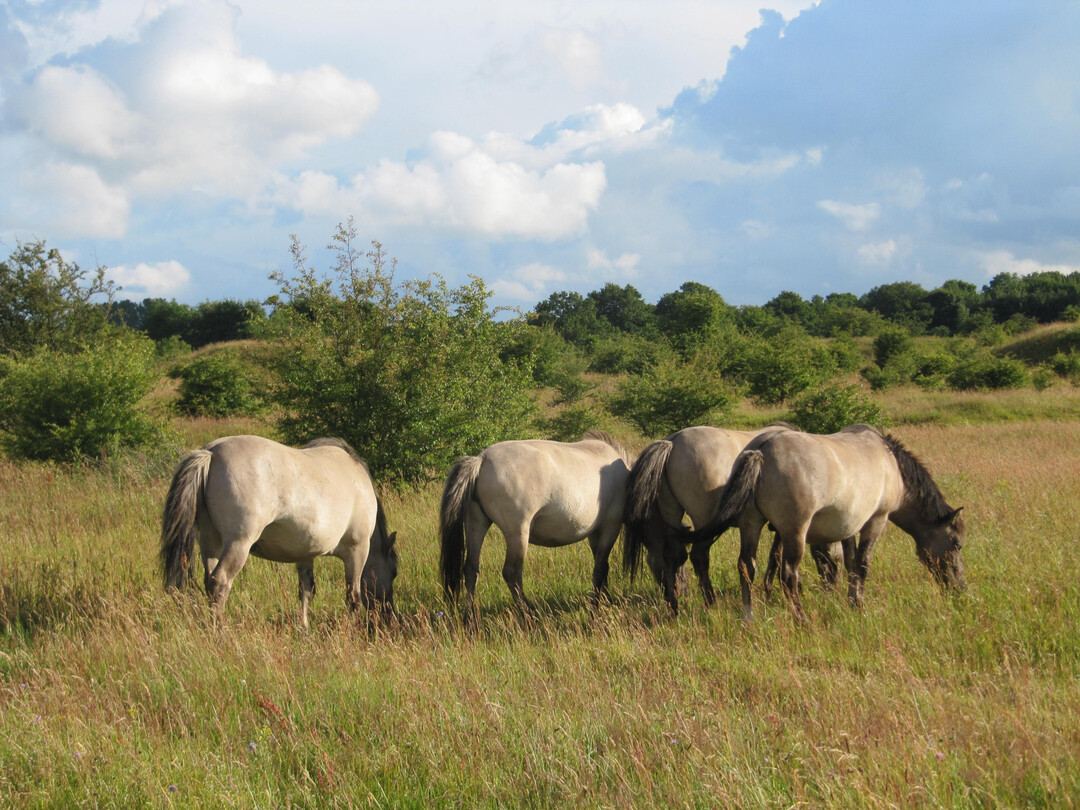
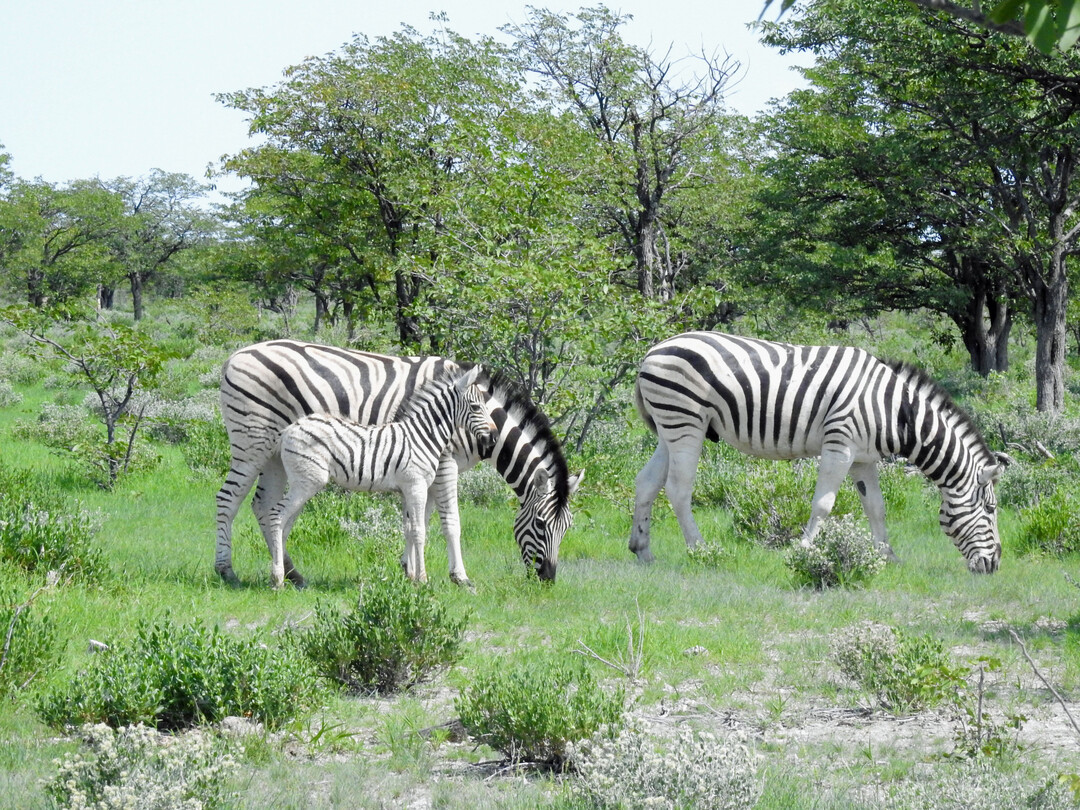

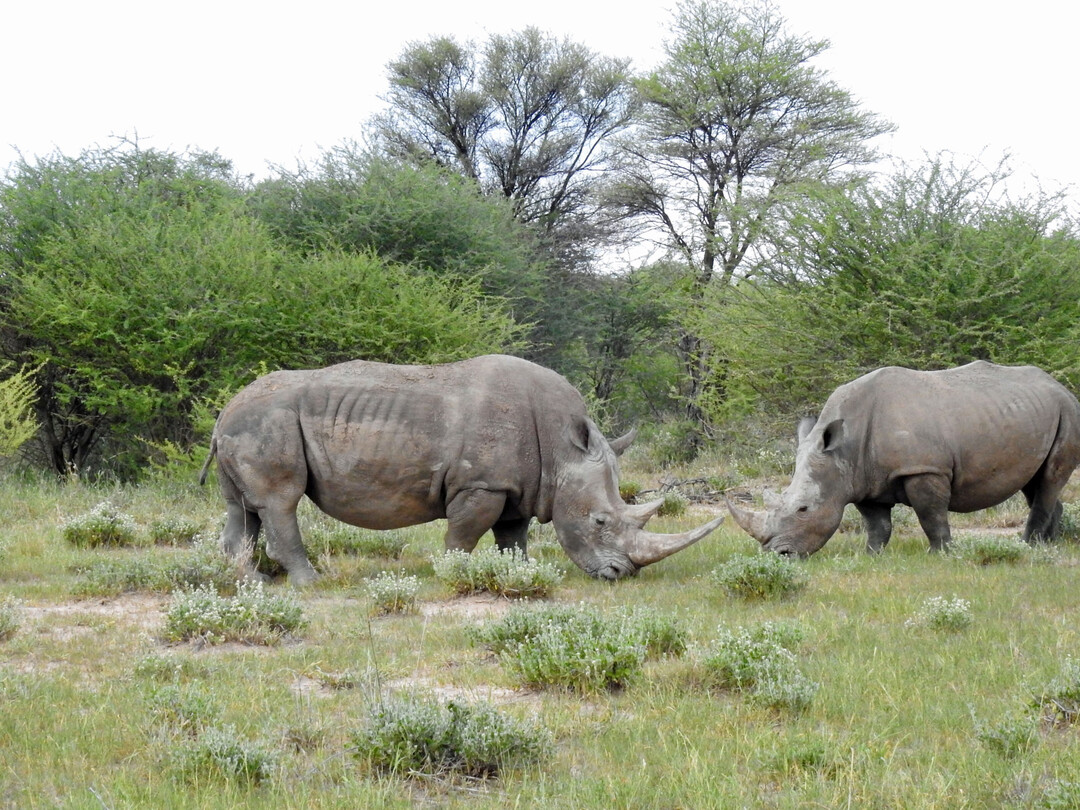
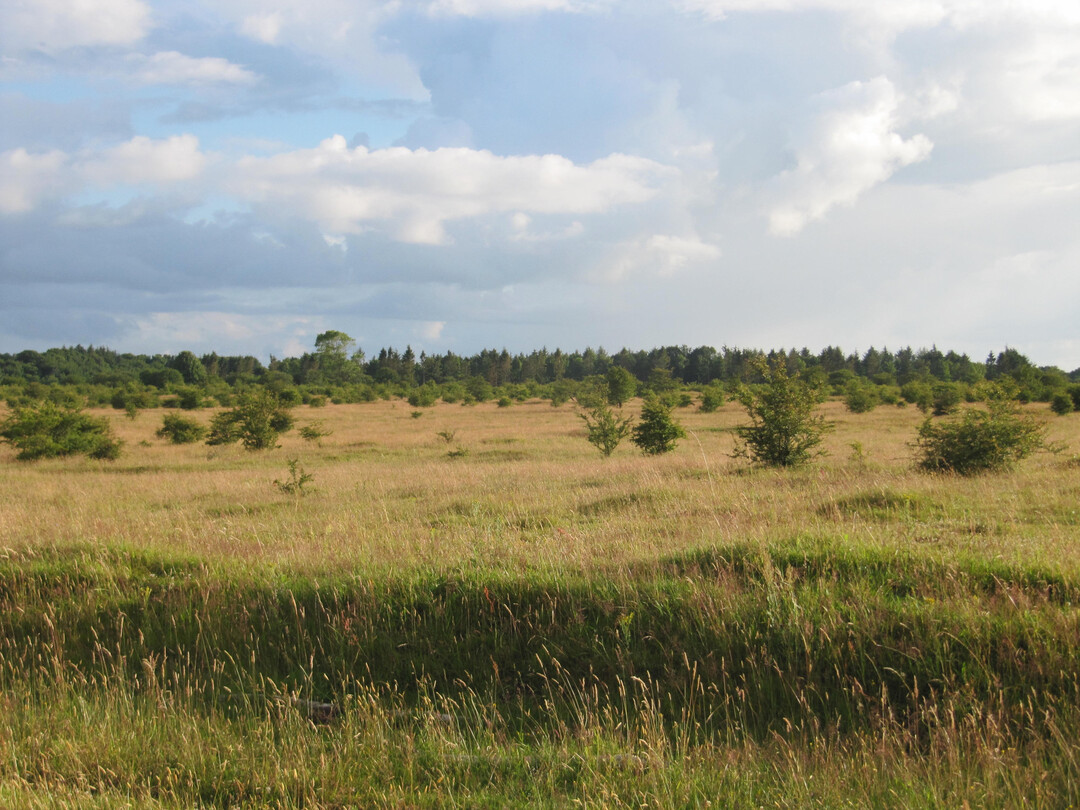
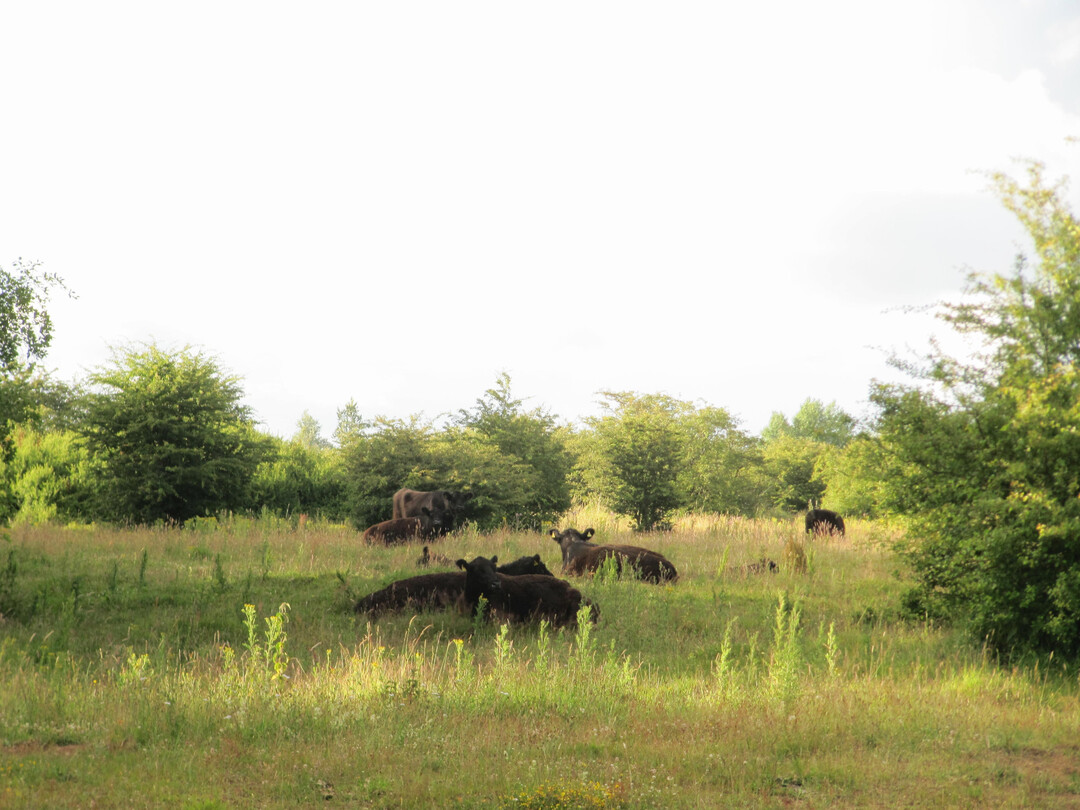
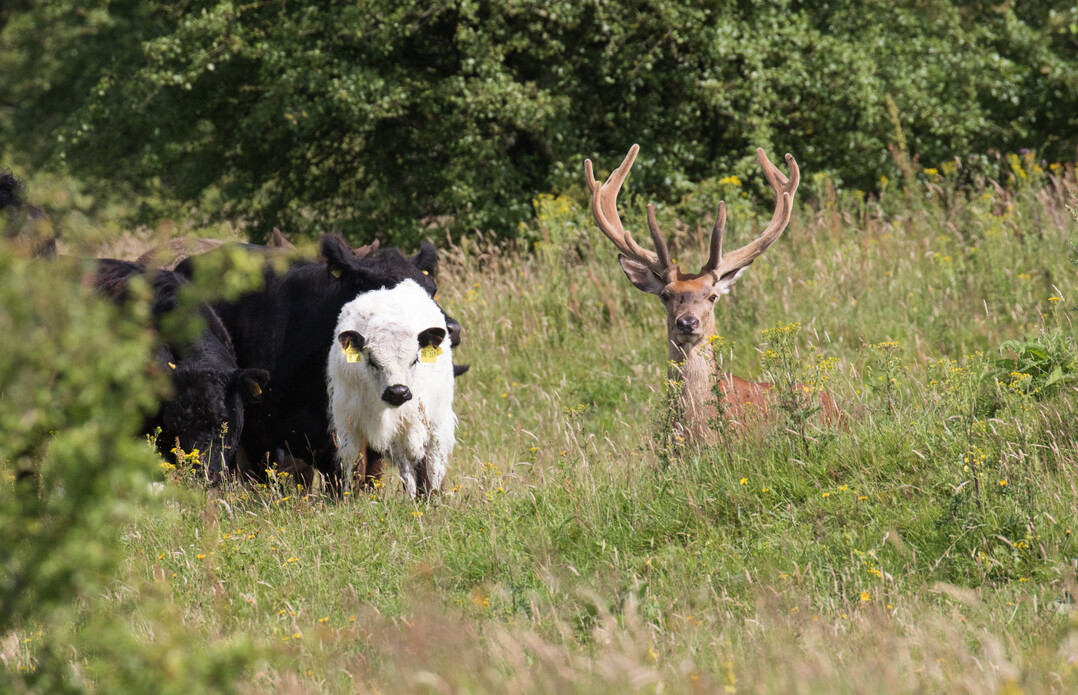
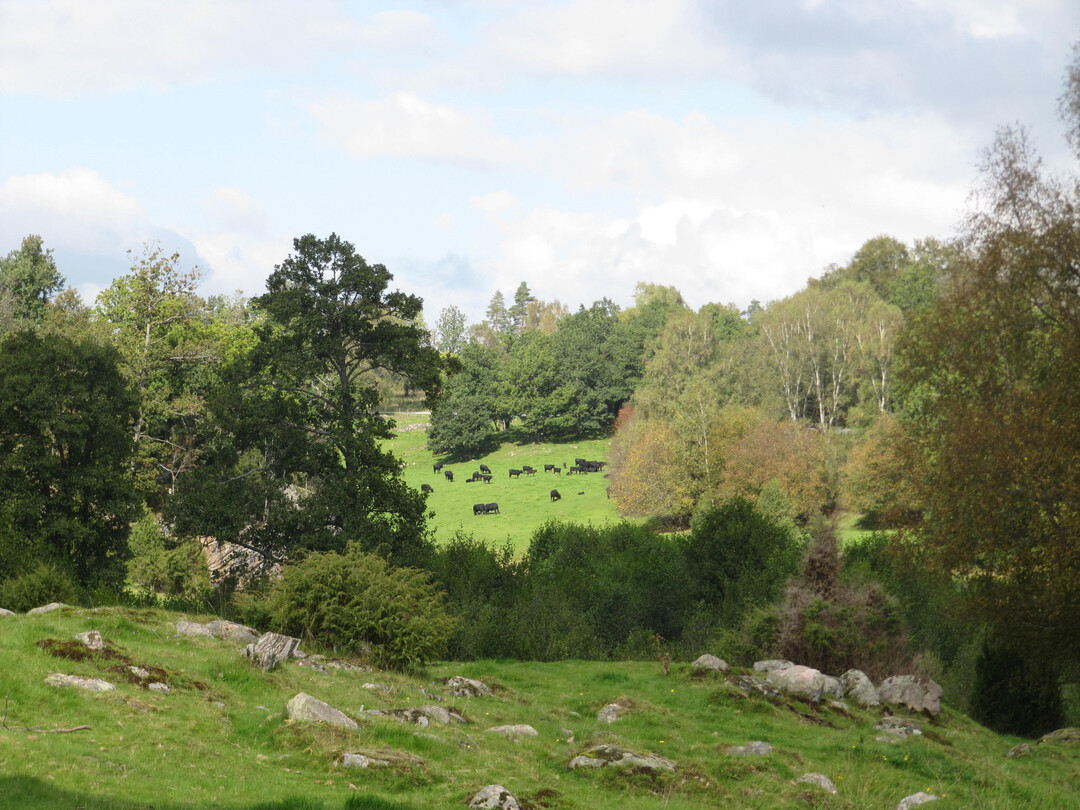
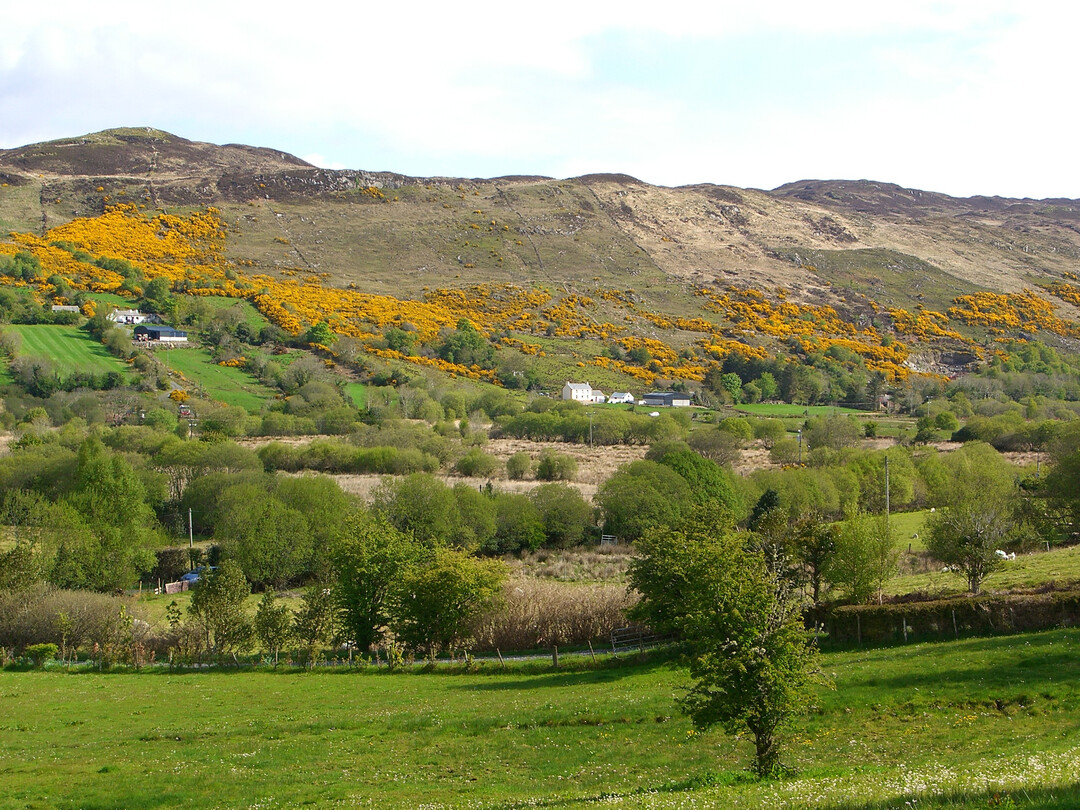
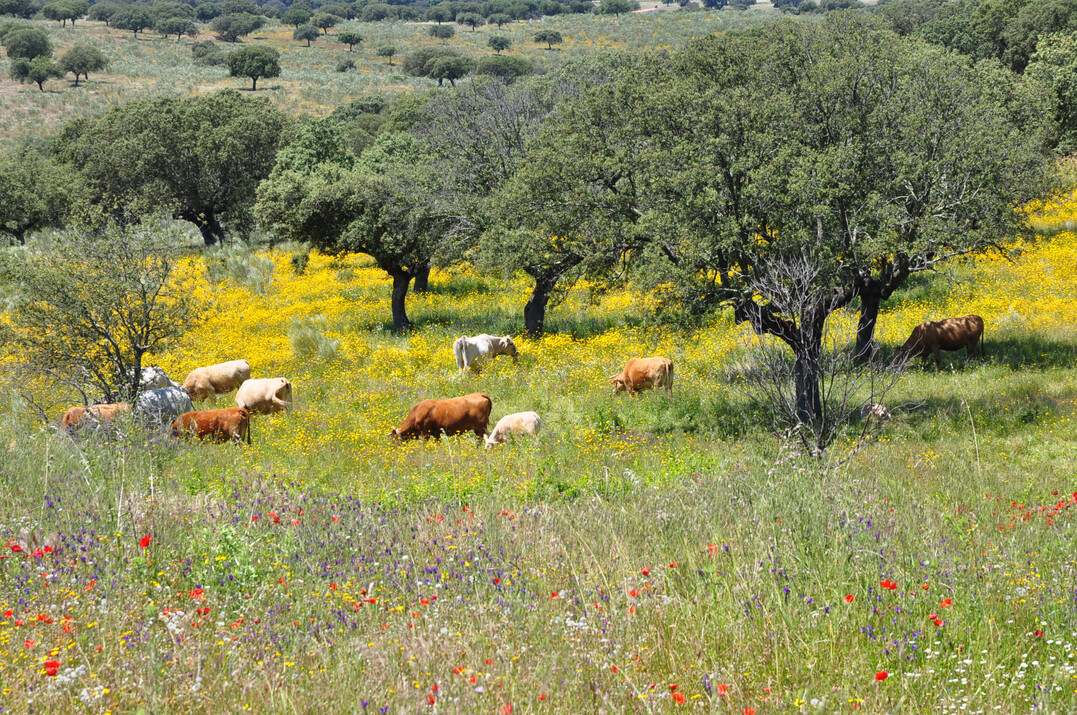
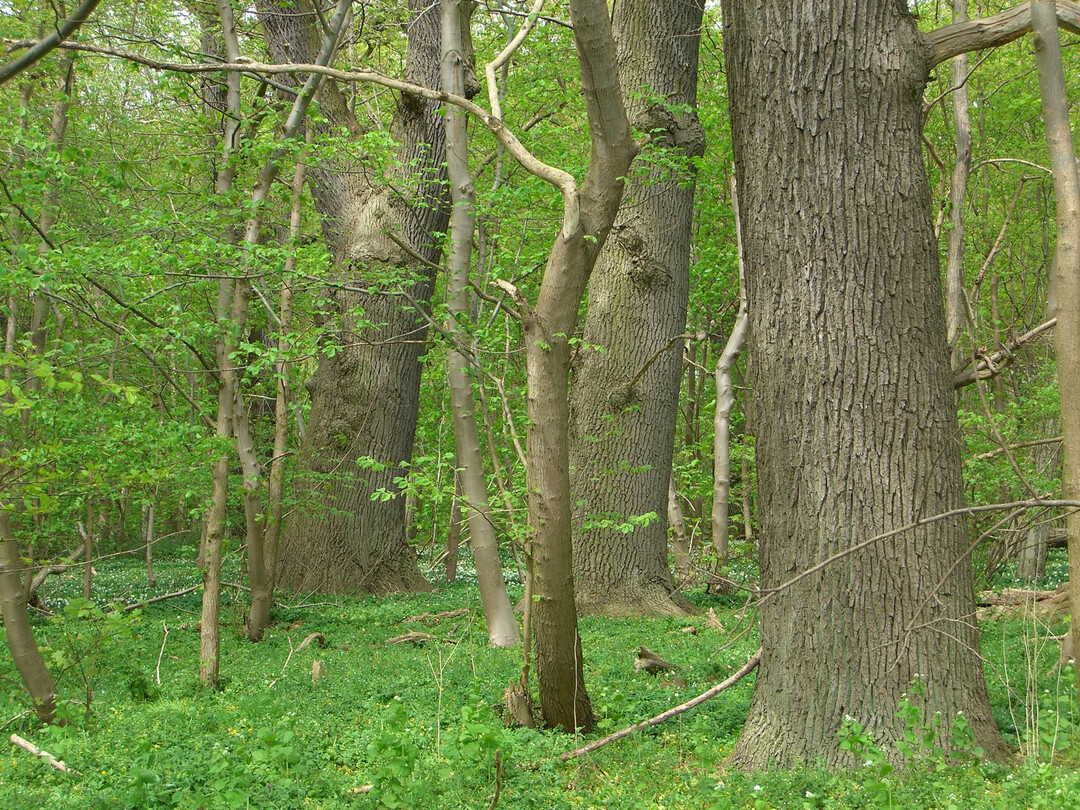

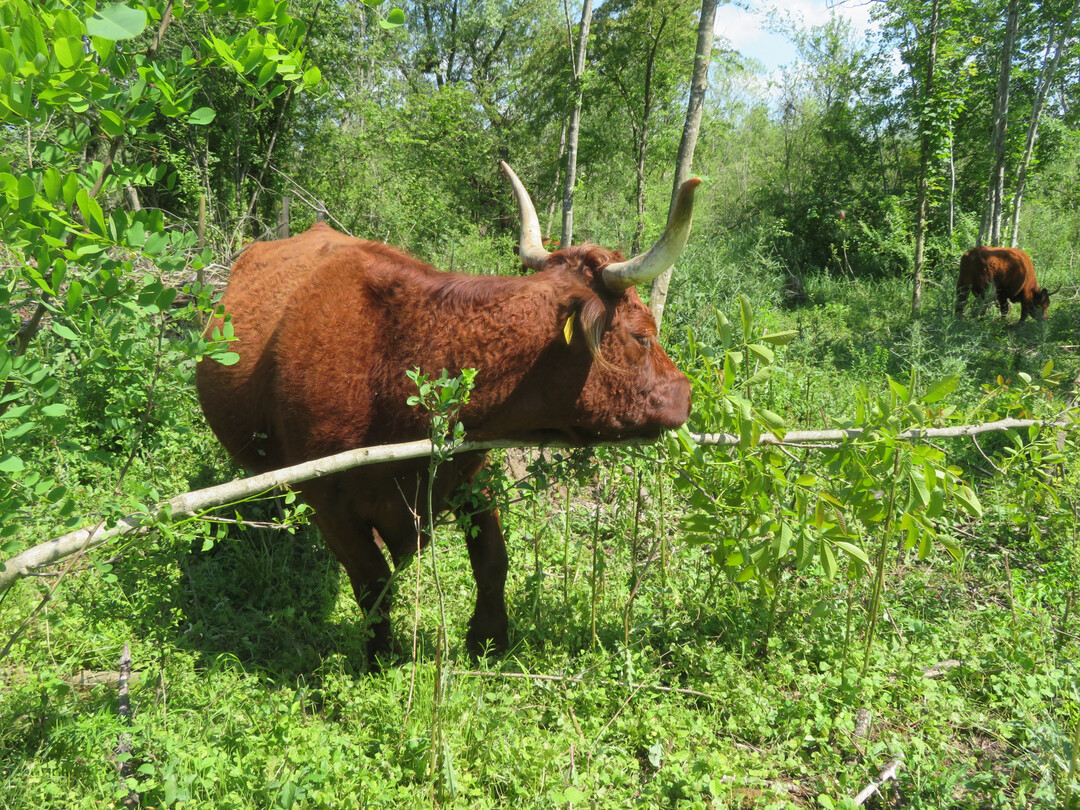
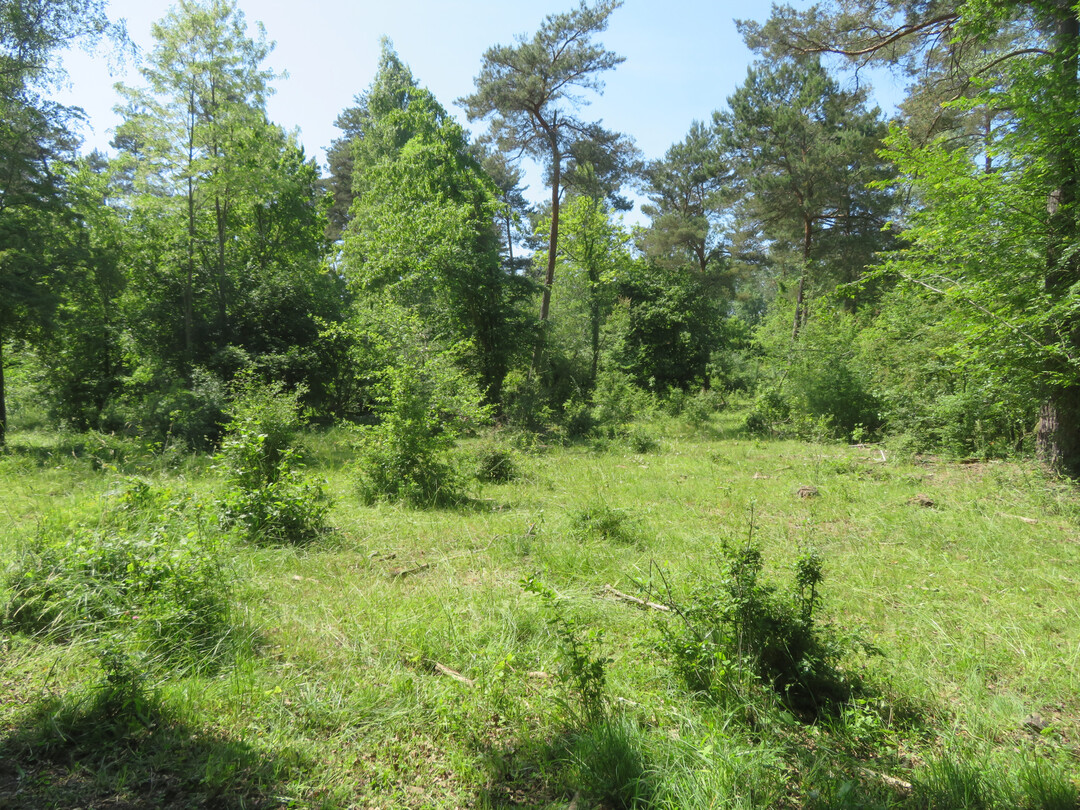
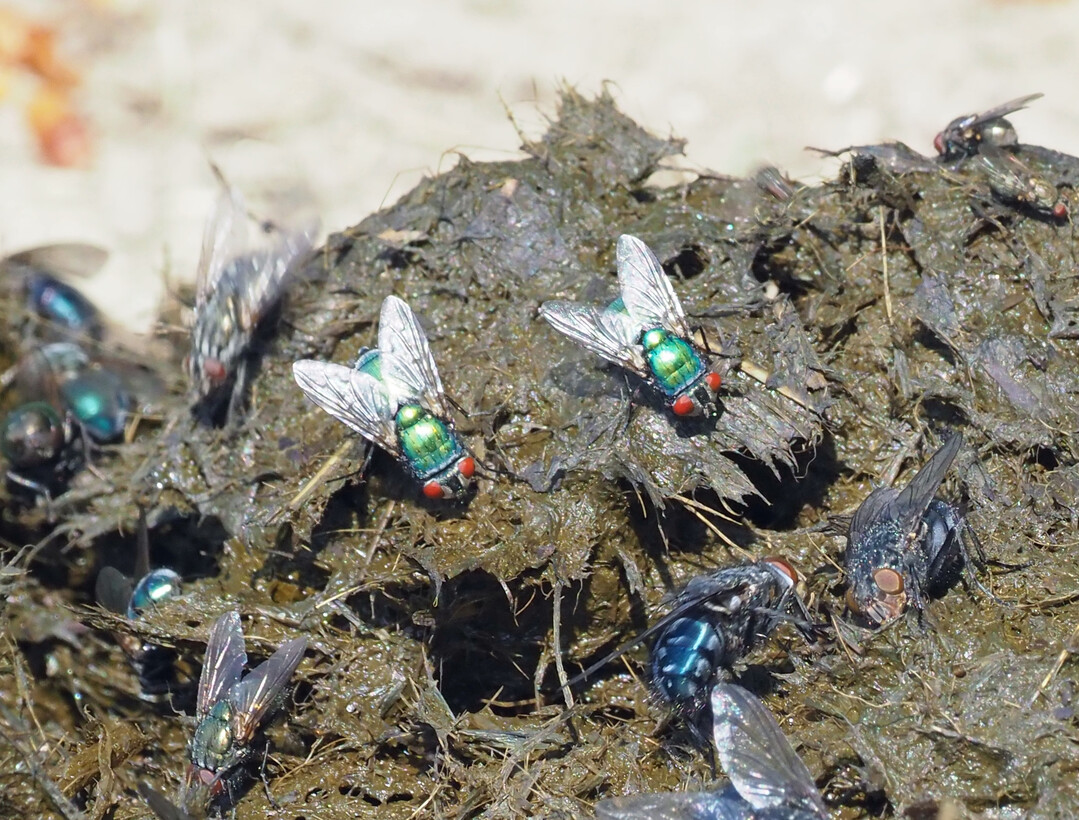
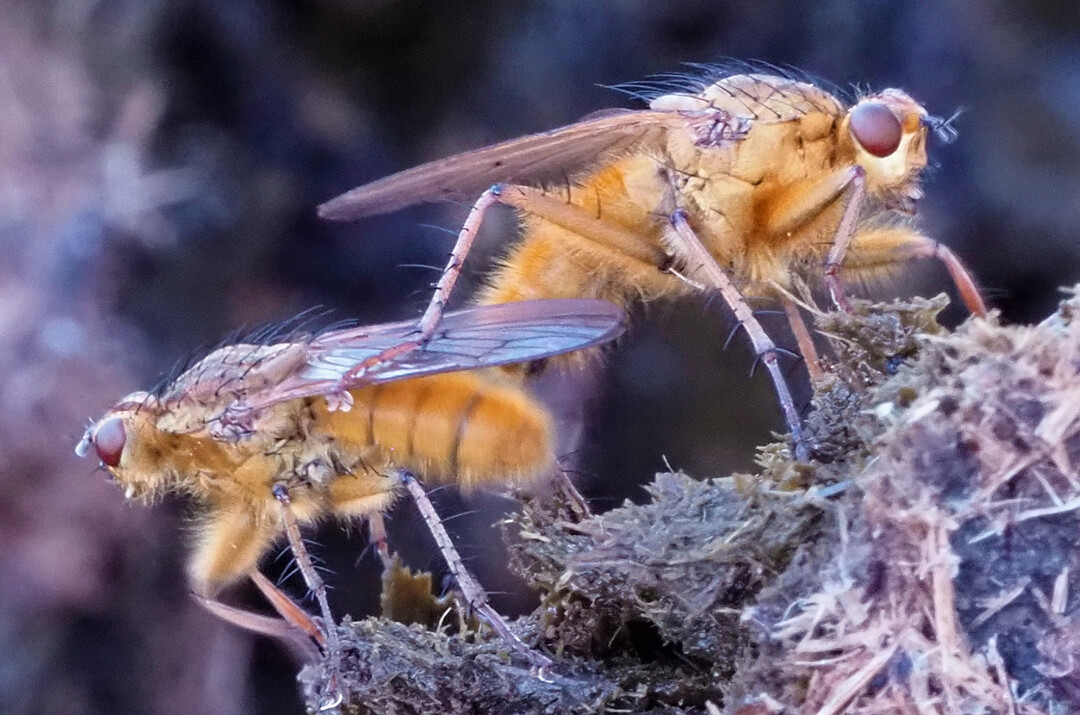
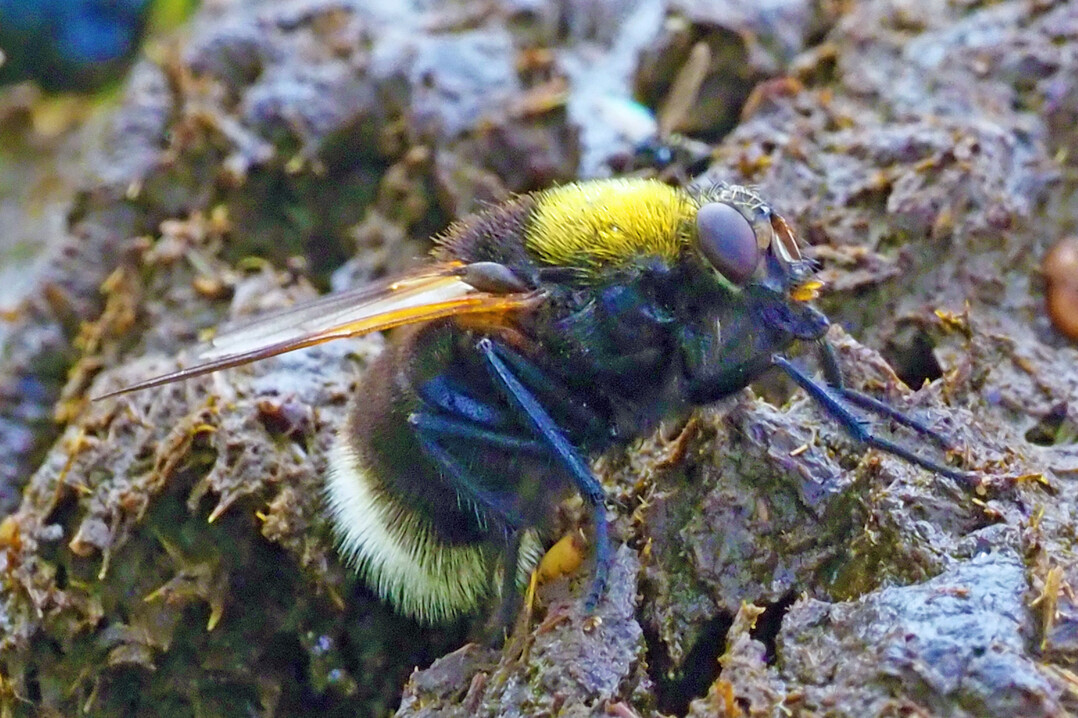
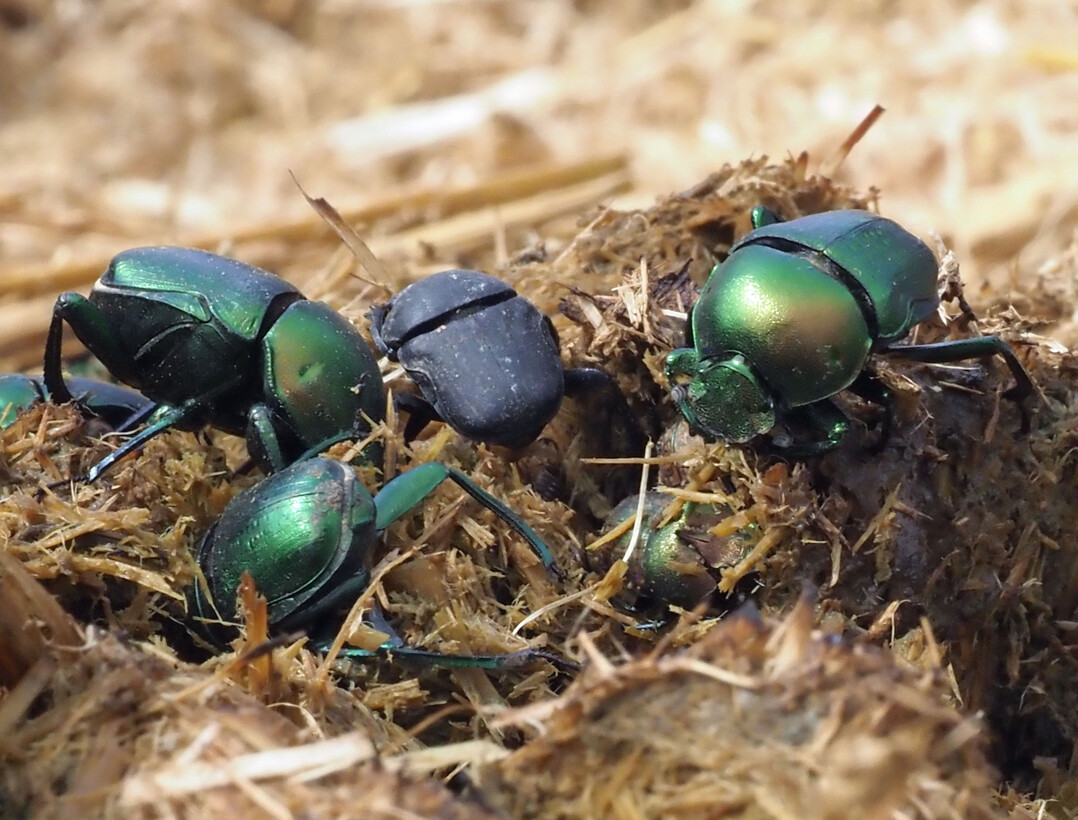
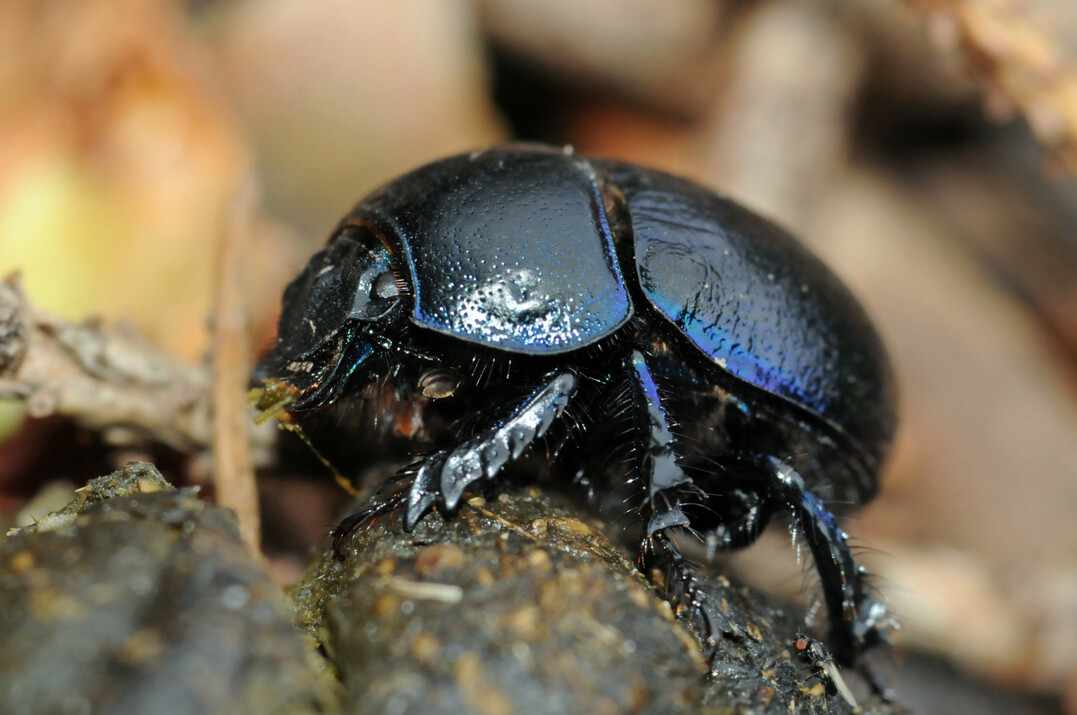
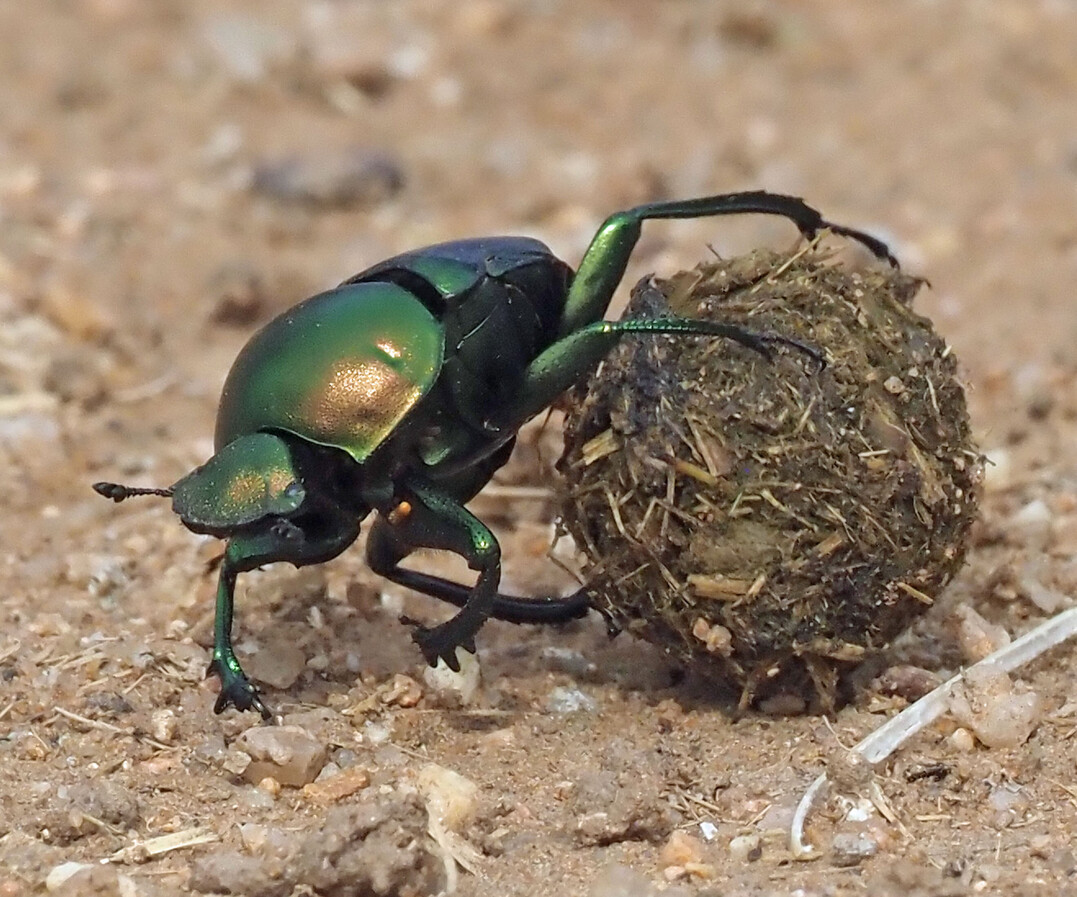
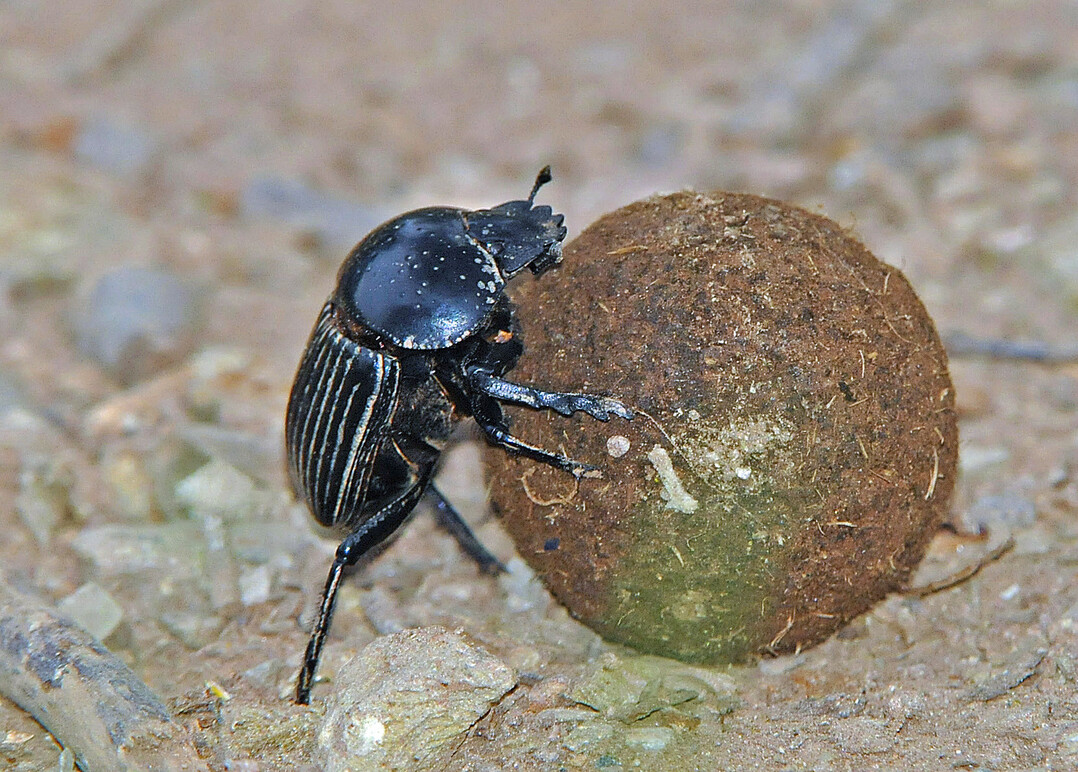
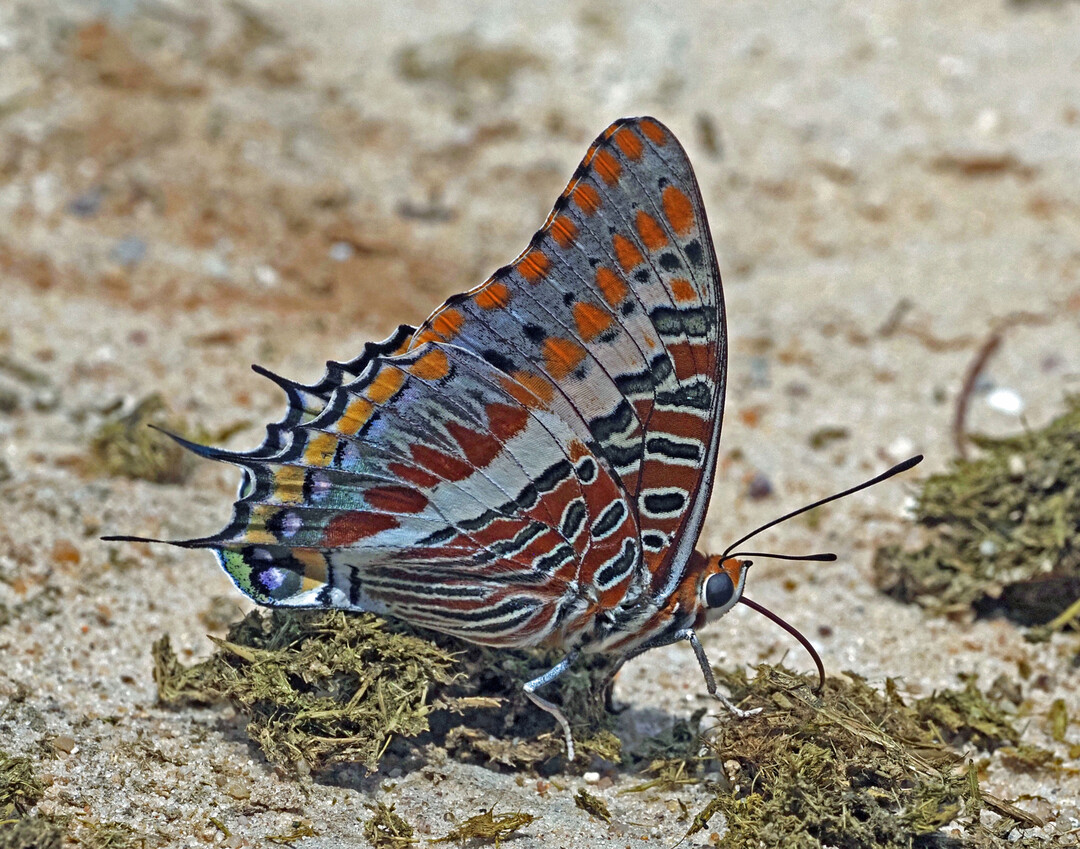
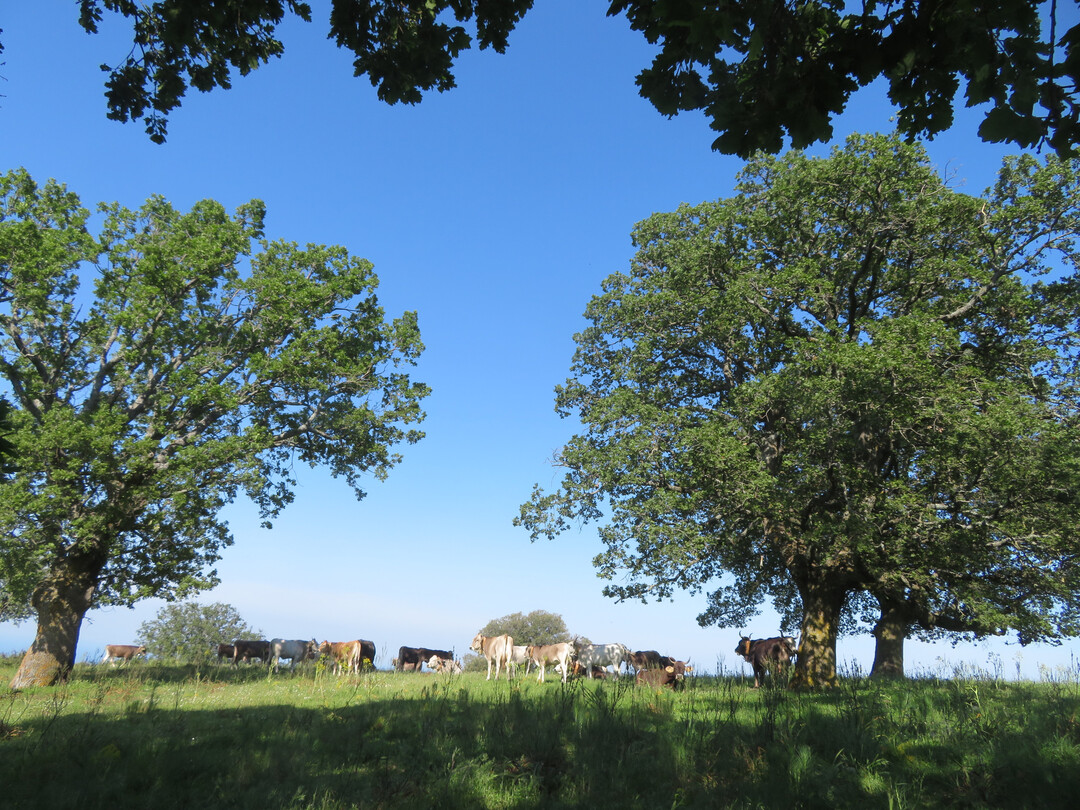
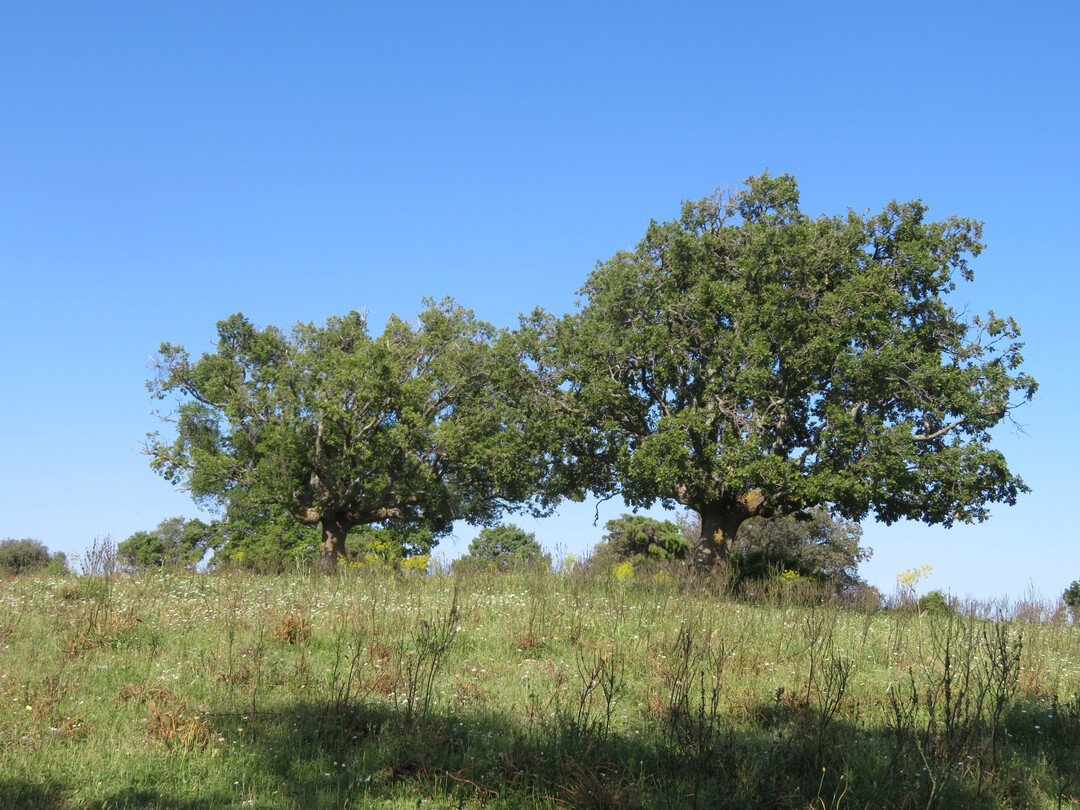
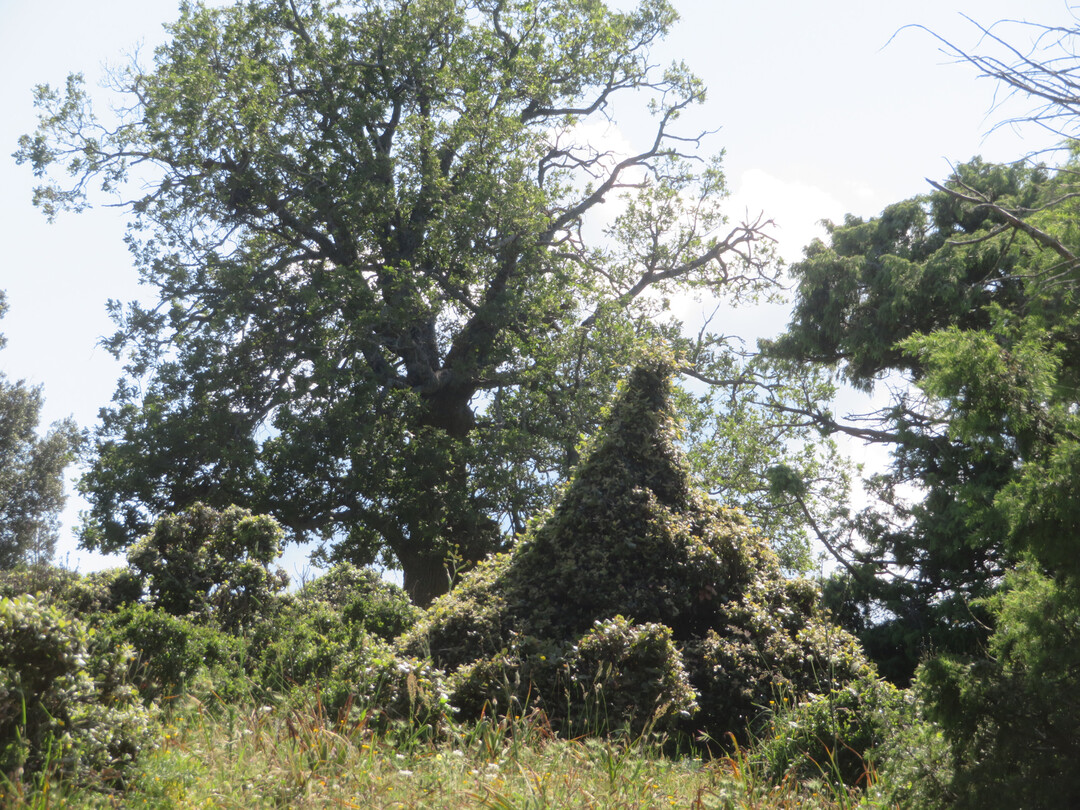

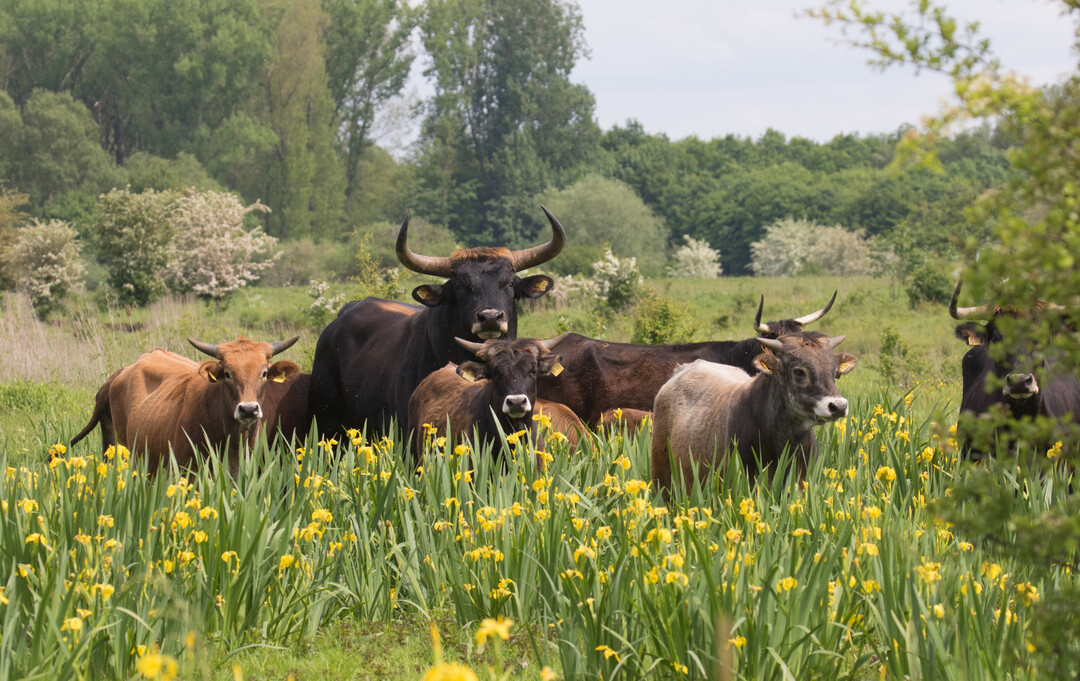
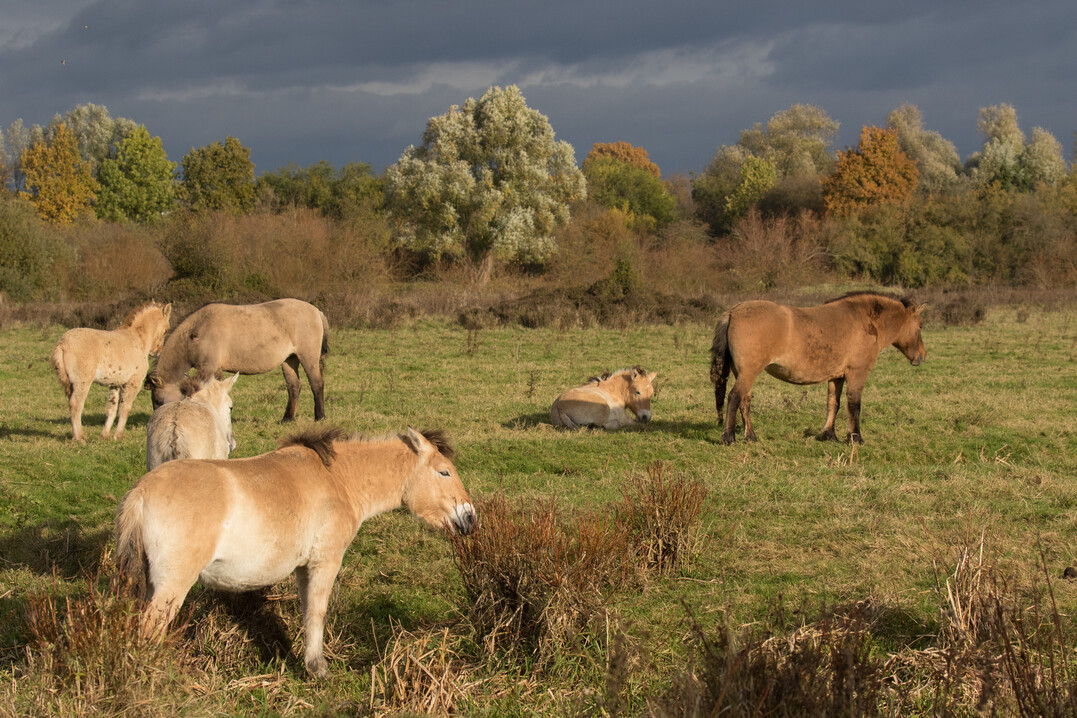

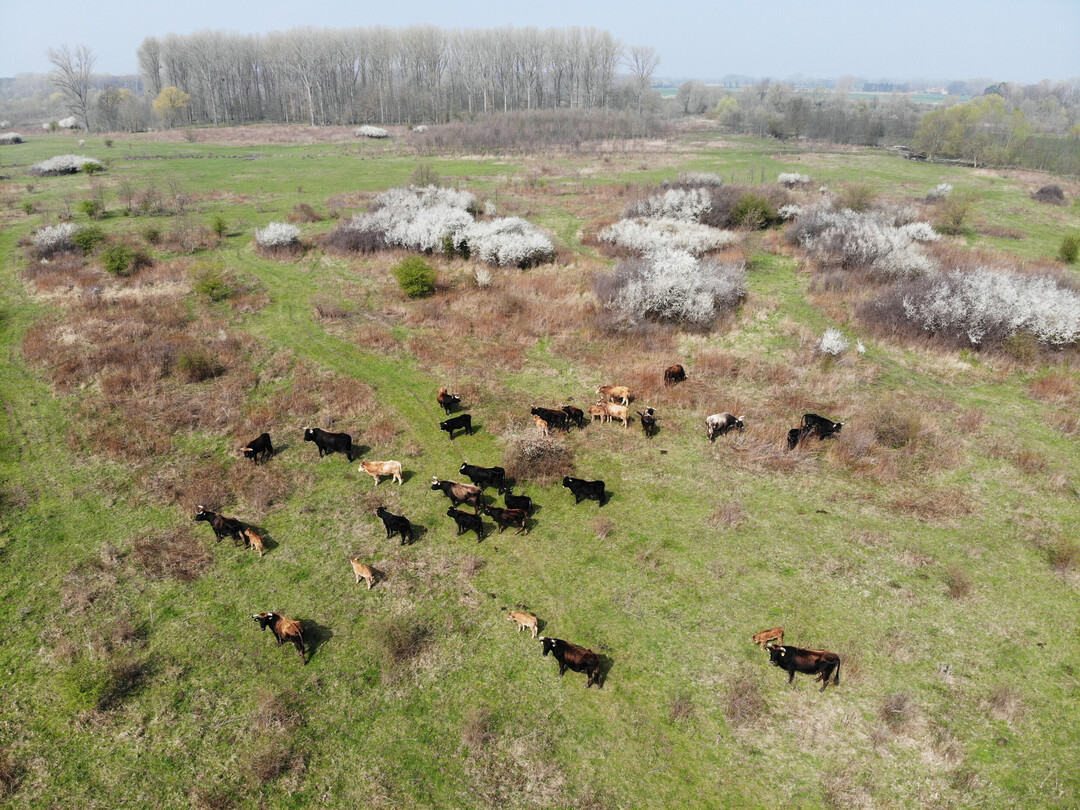
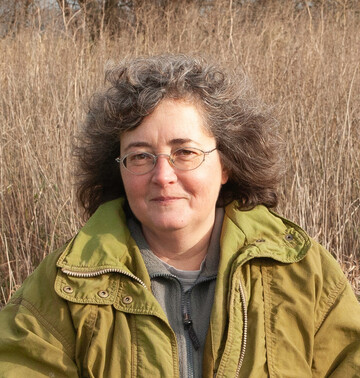
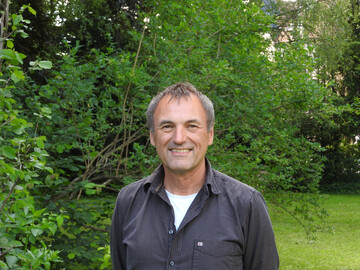
Zu diesem Artikel liegen noch keine Kommentare vor.
Artikel kommentierenSchreiben Sie den ersten Kommentar.